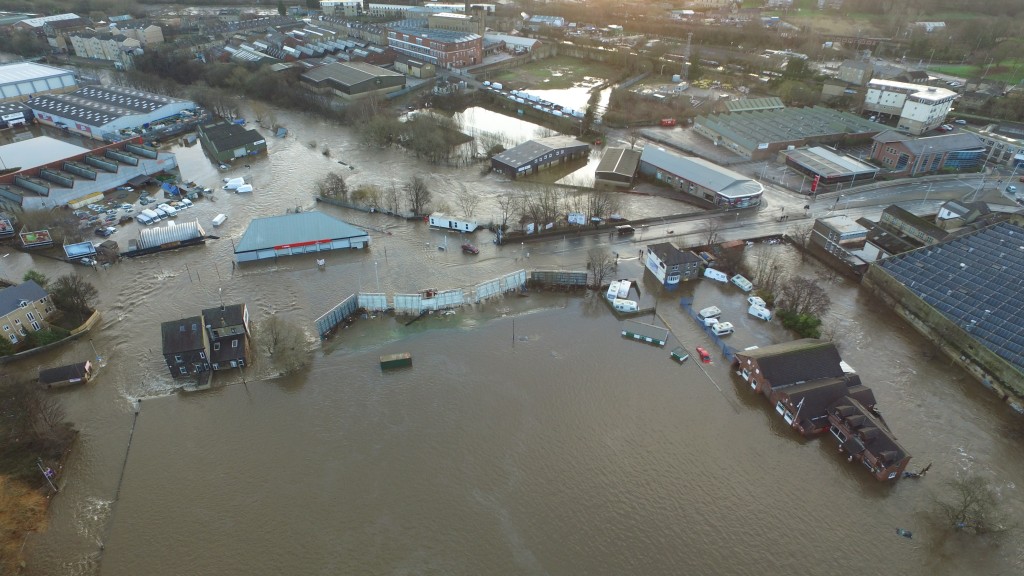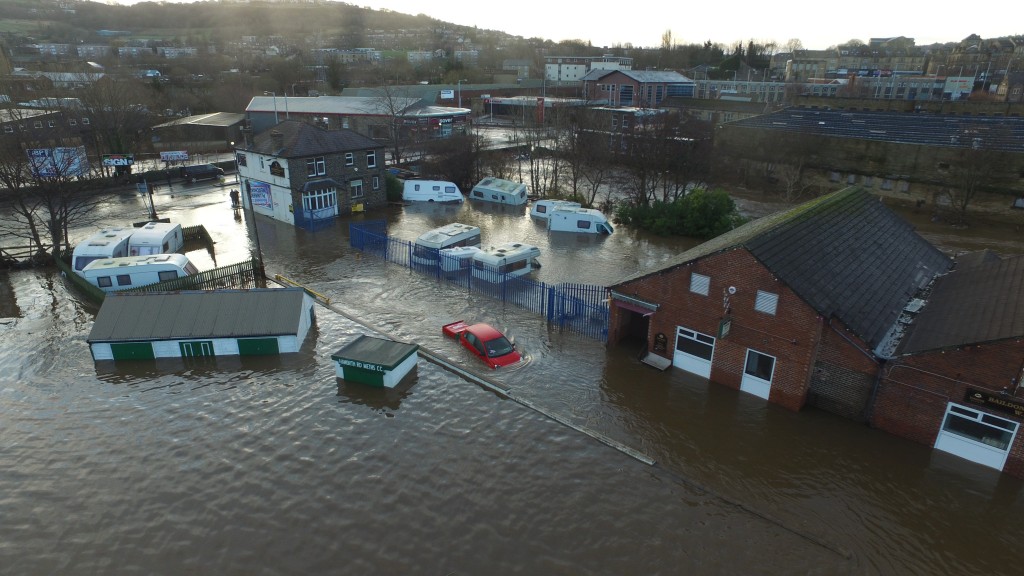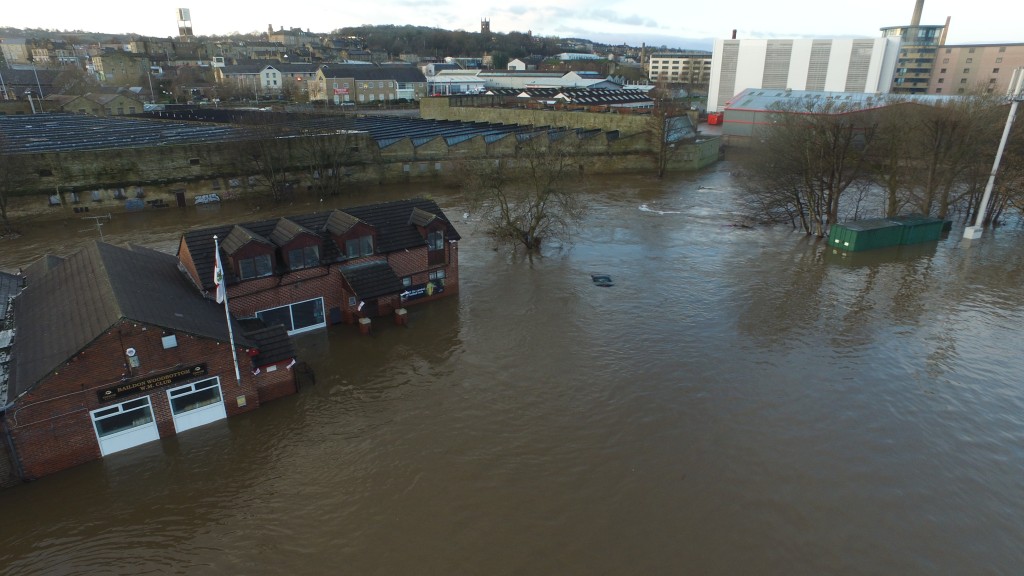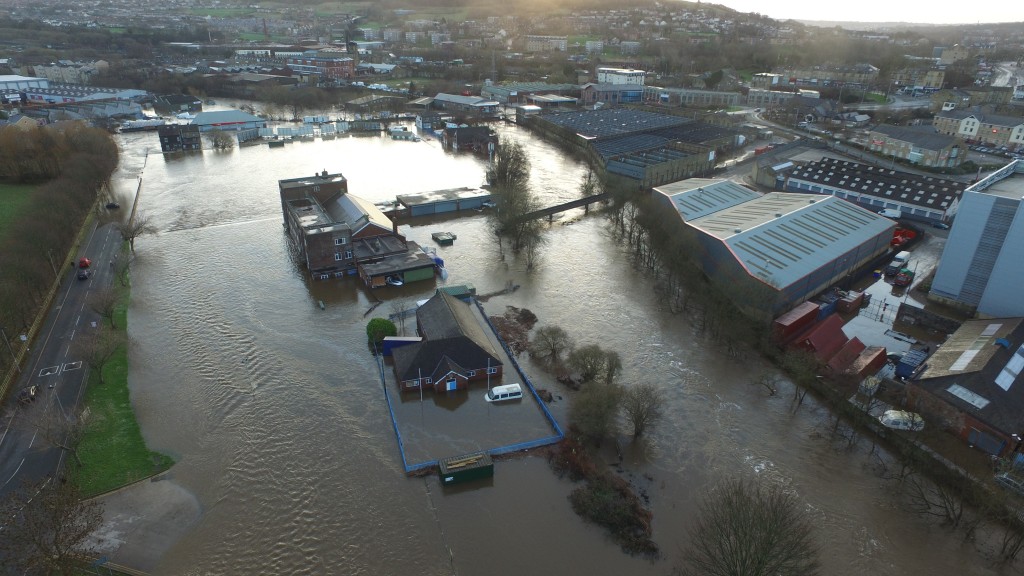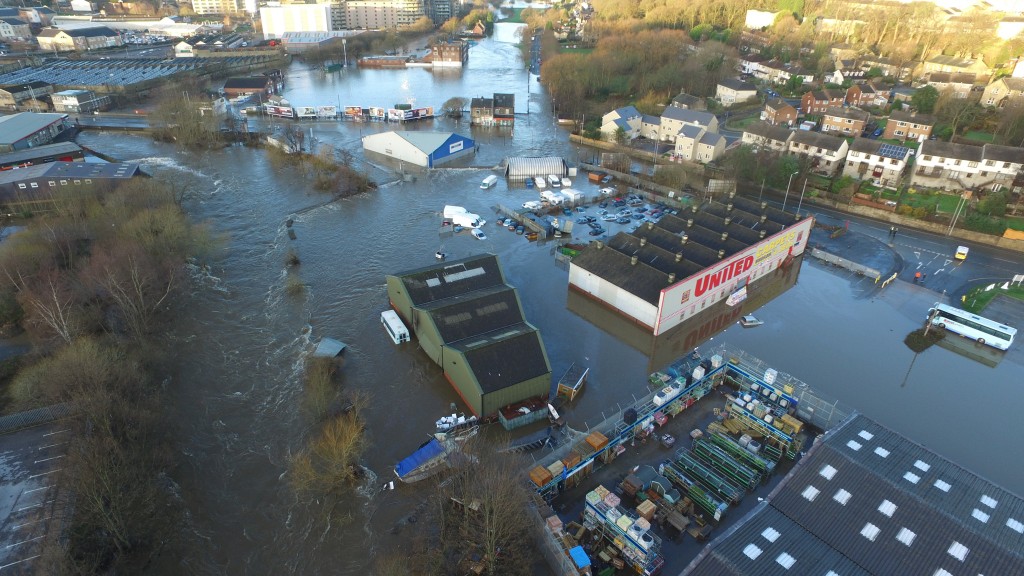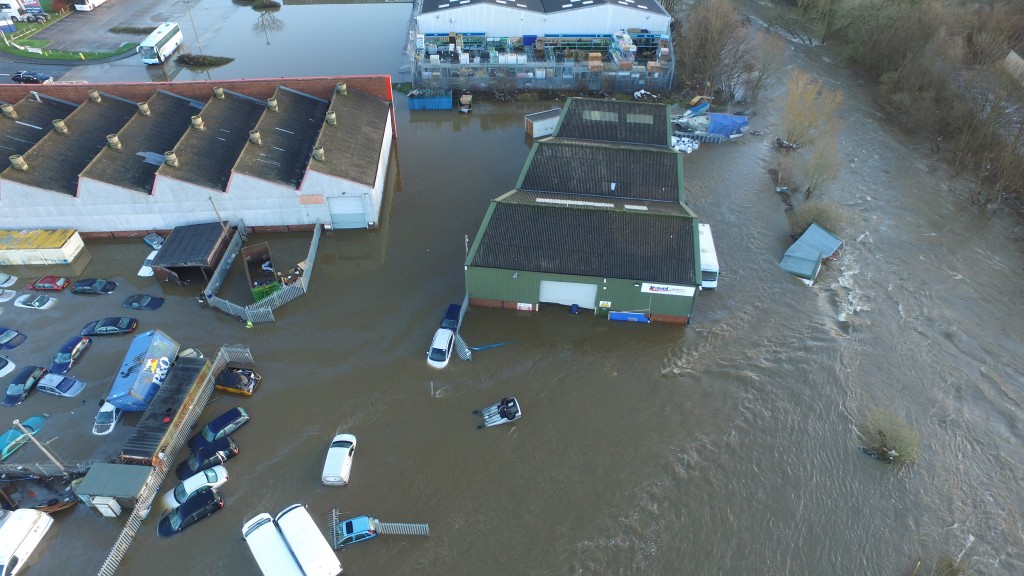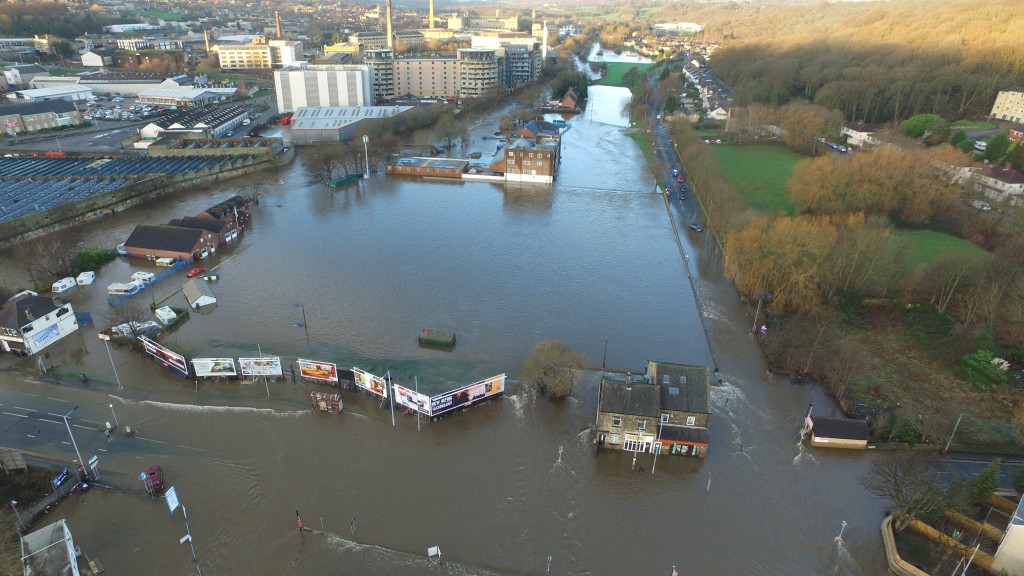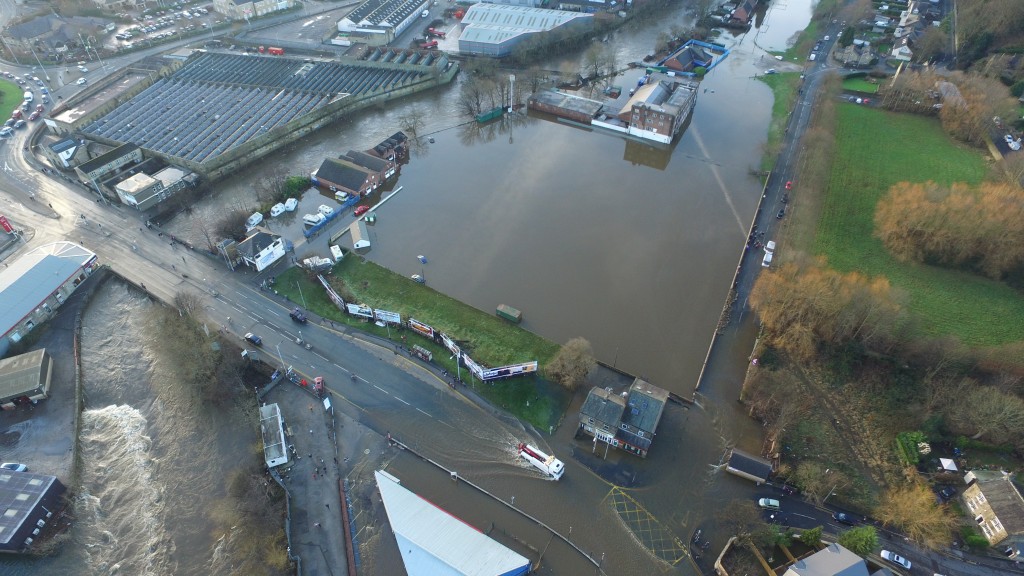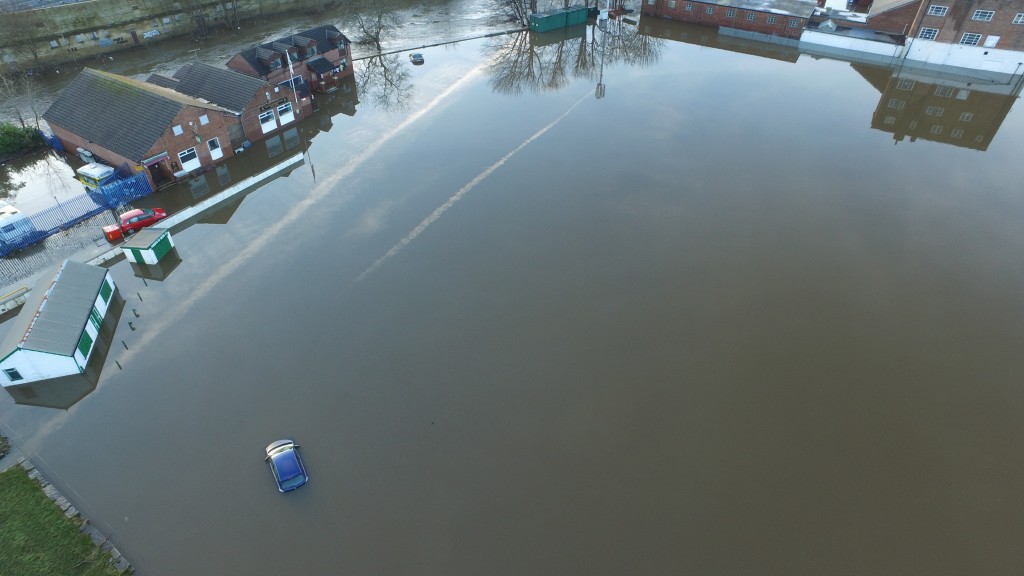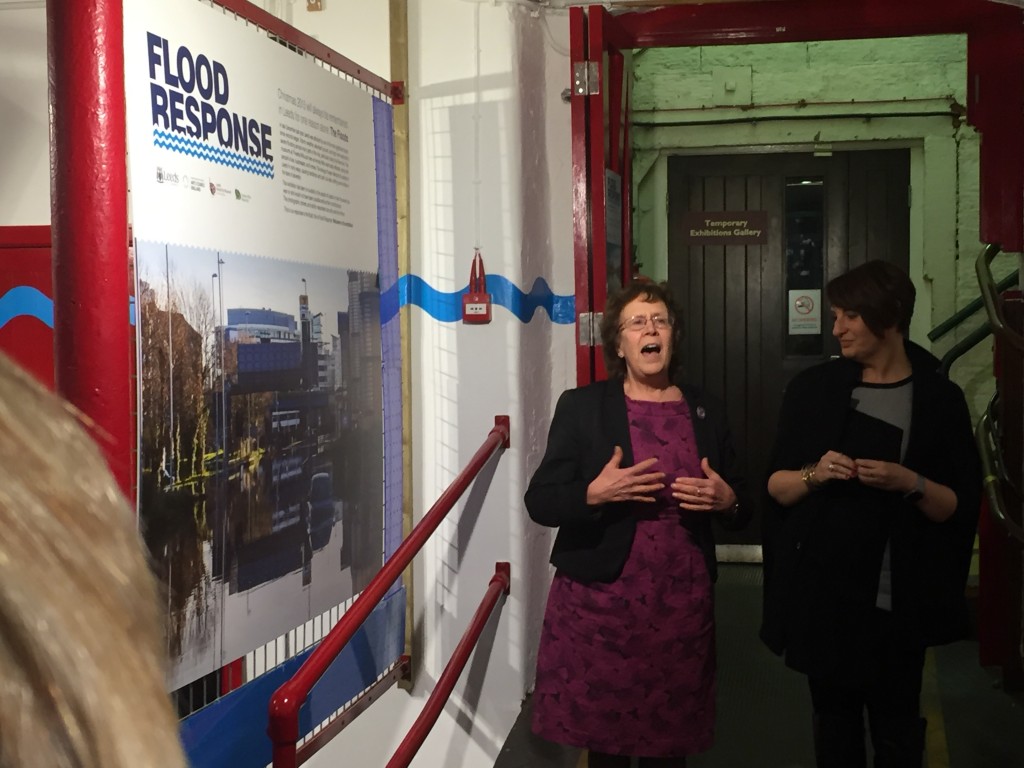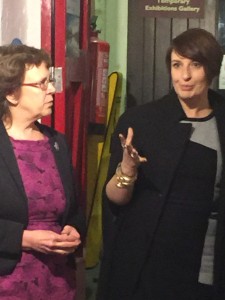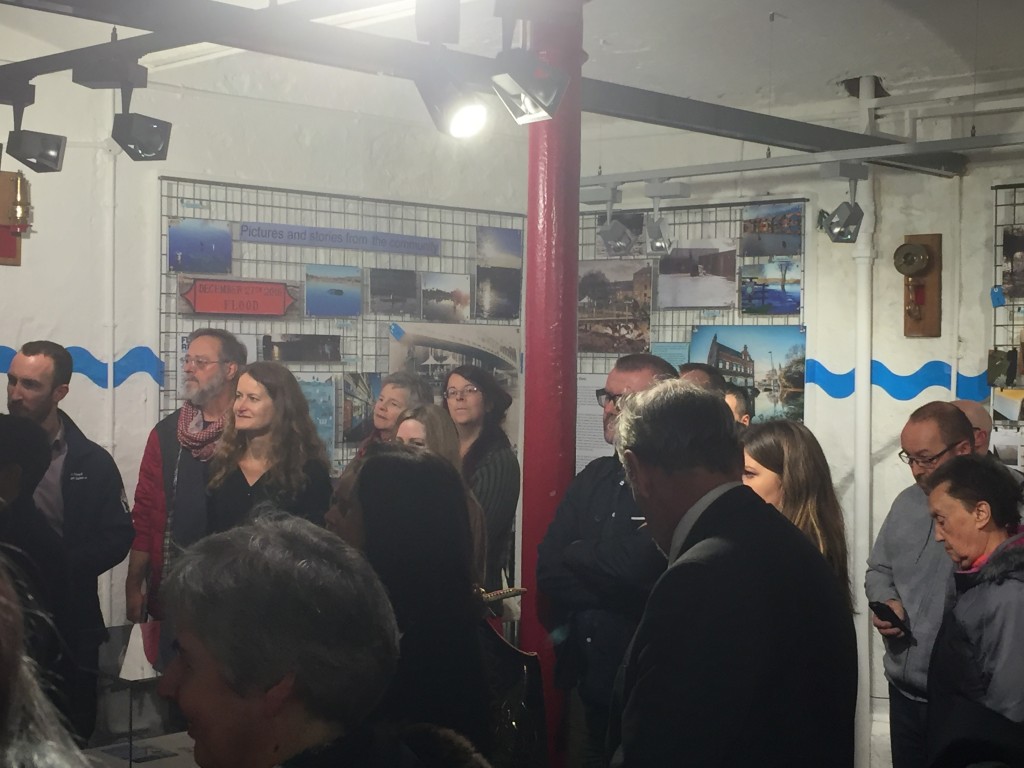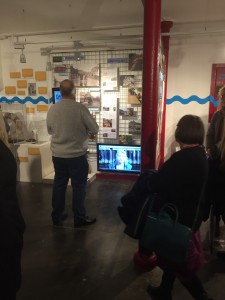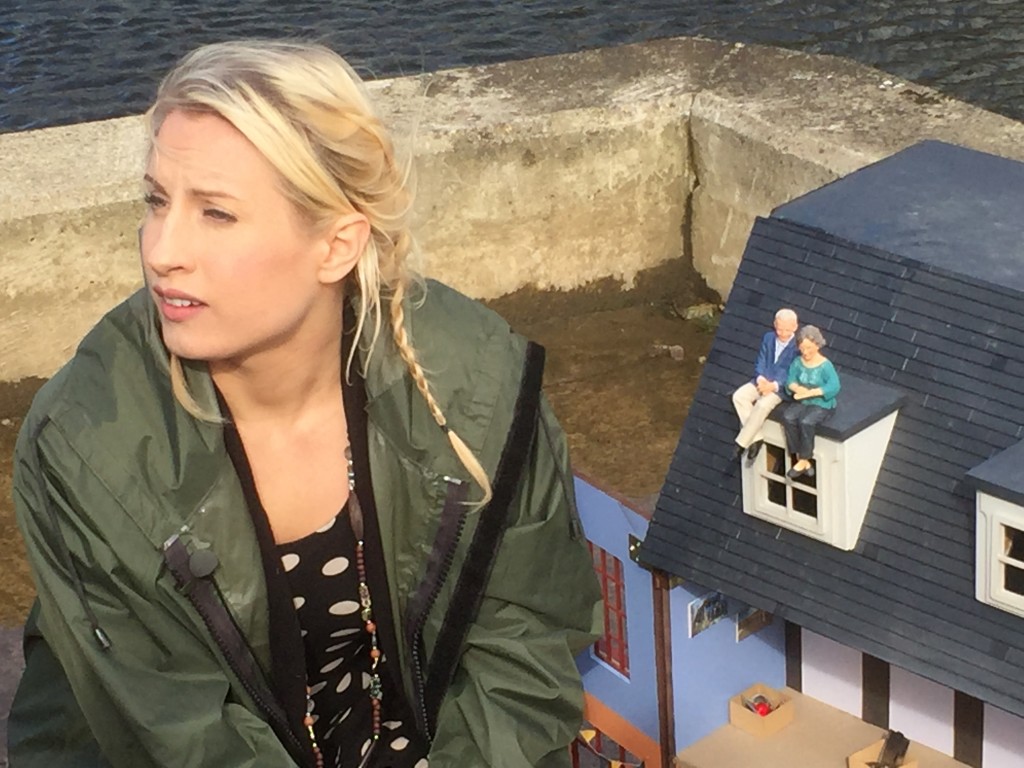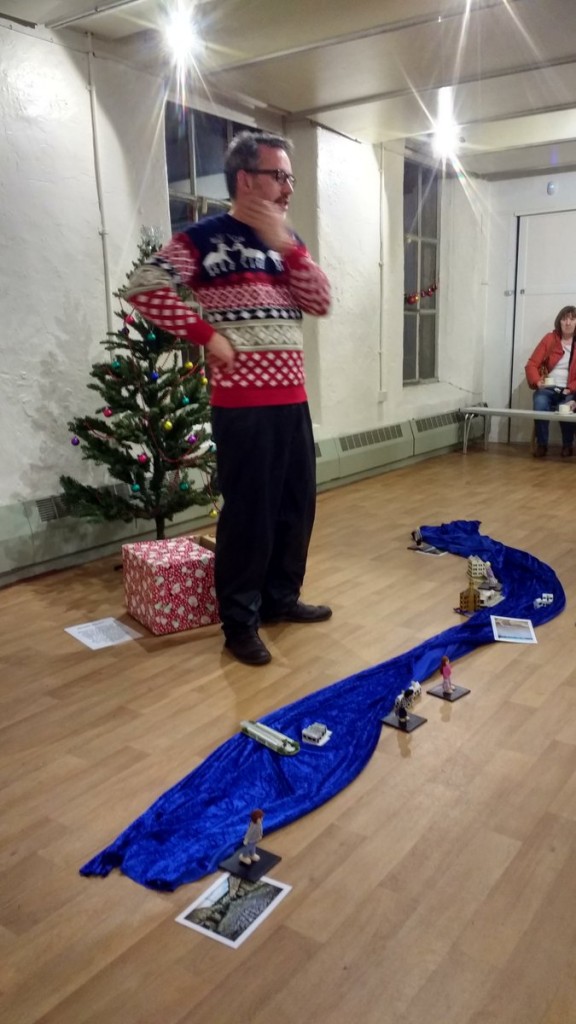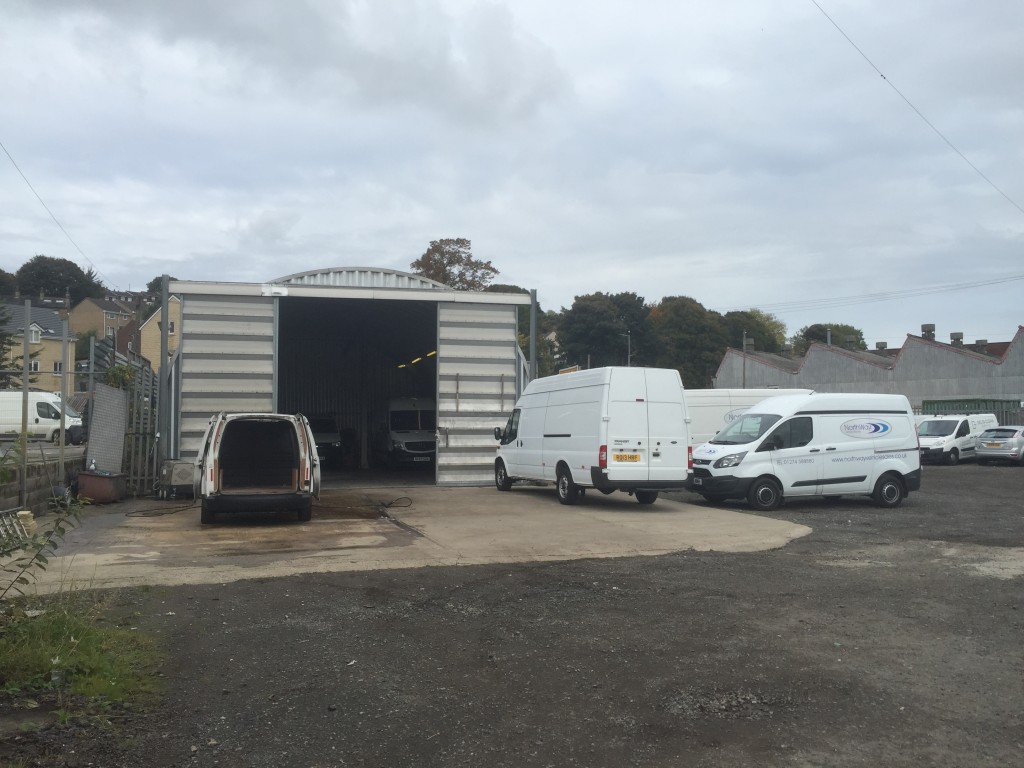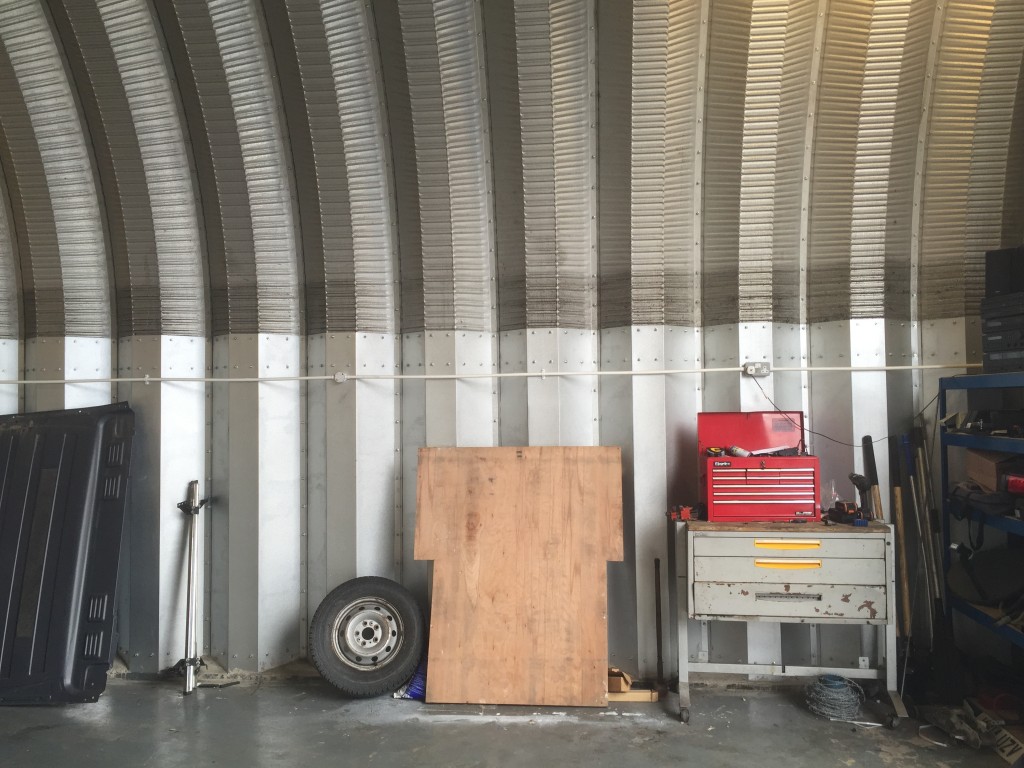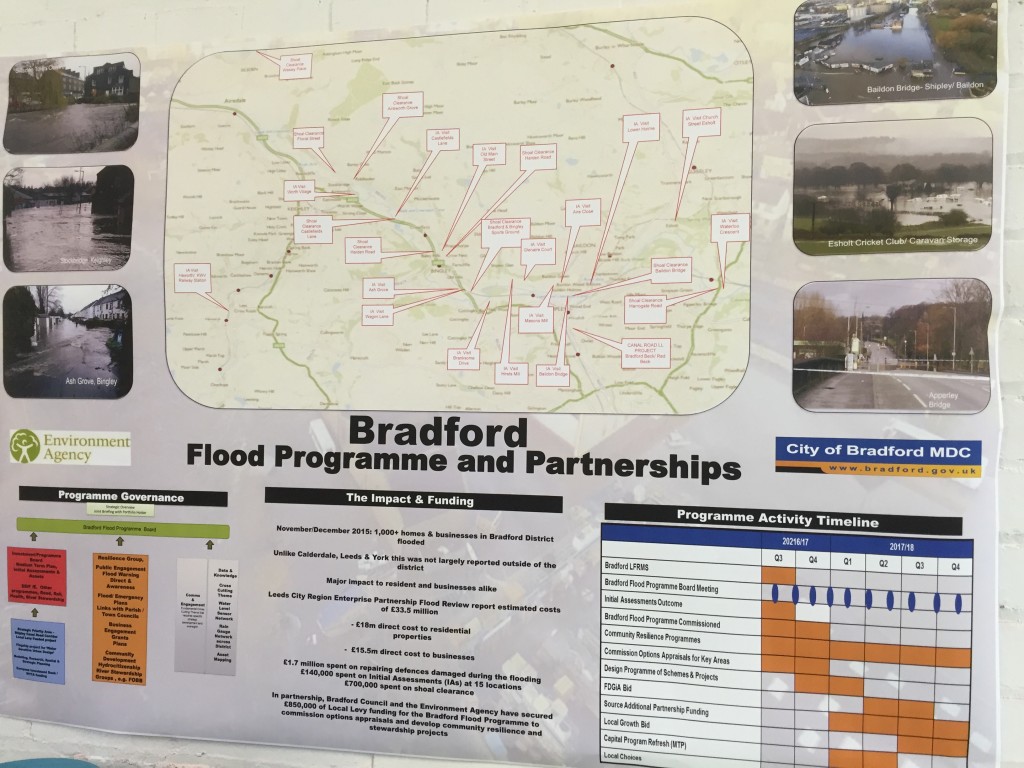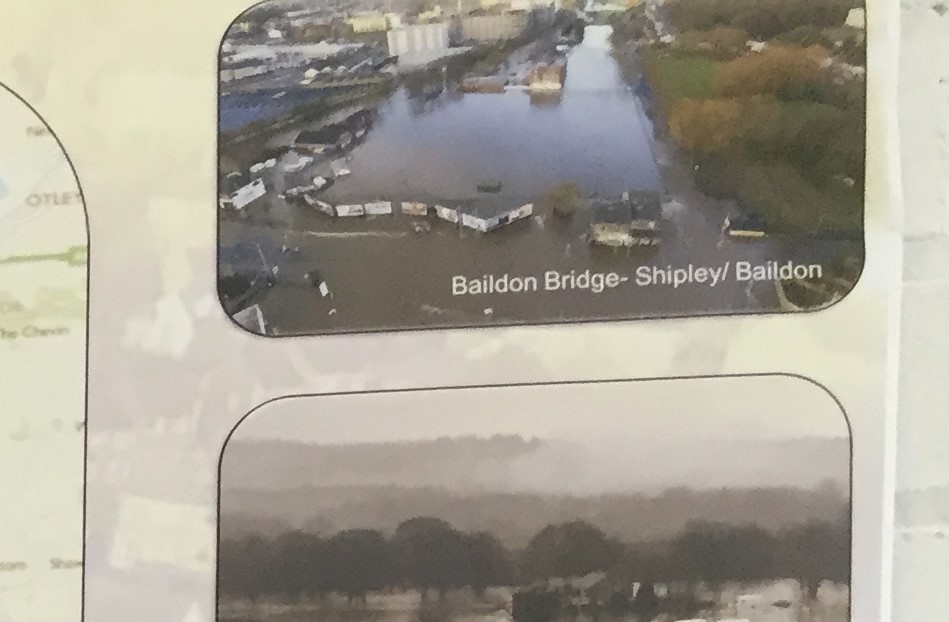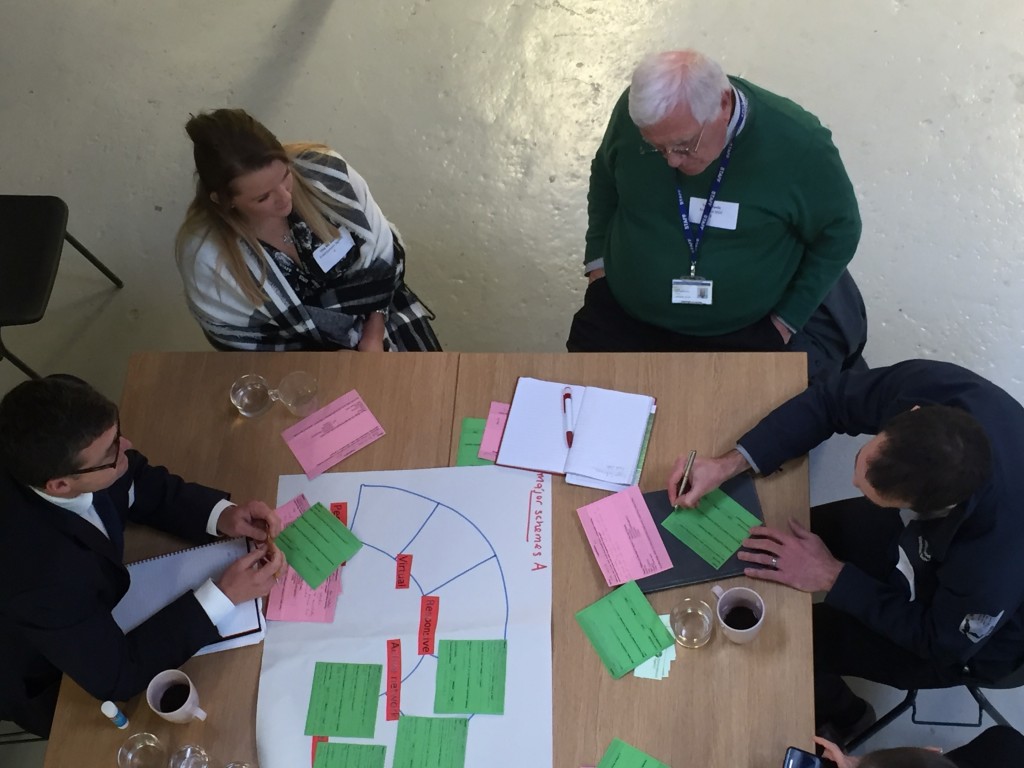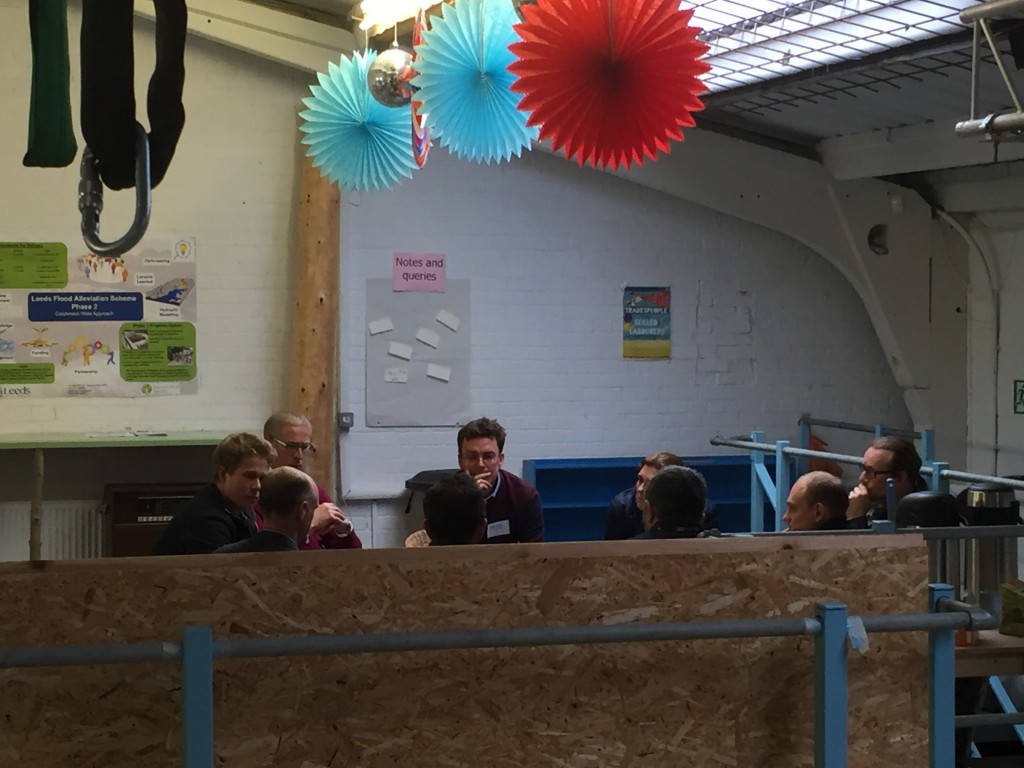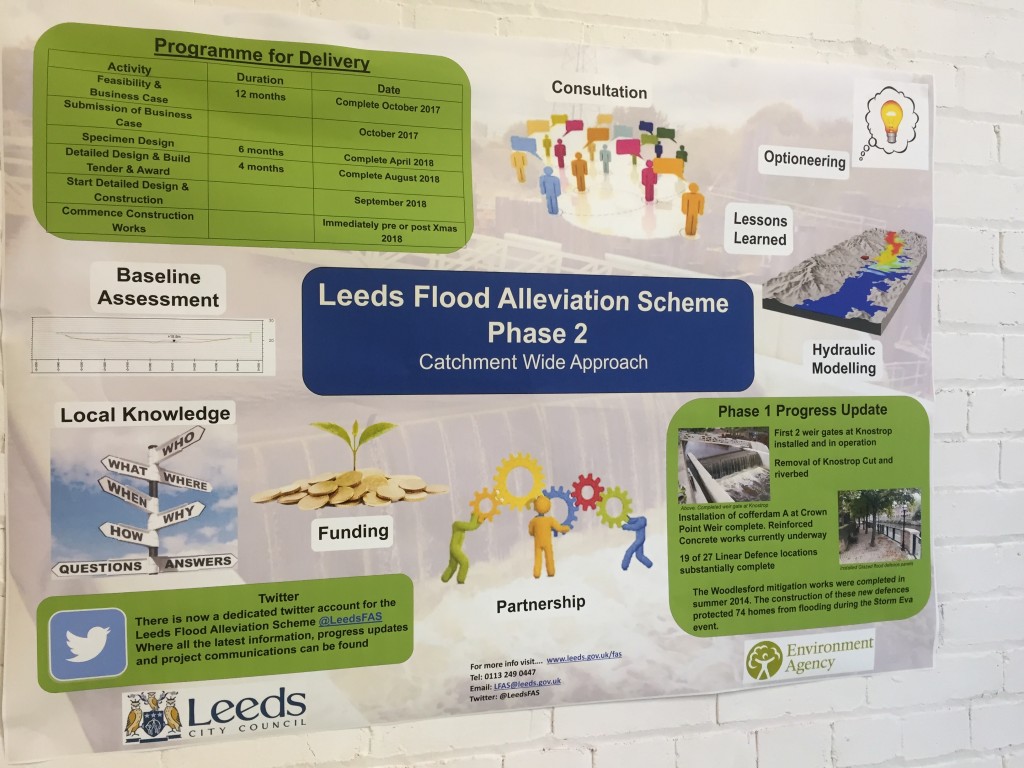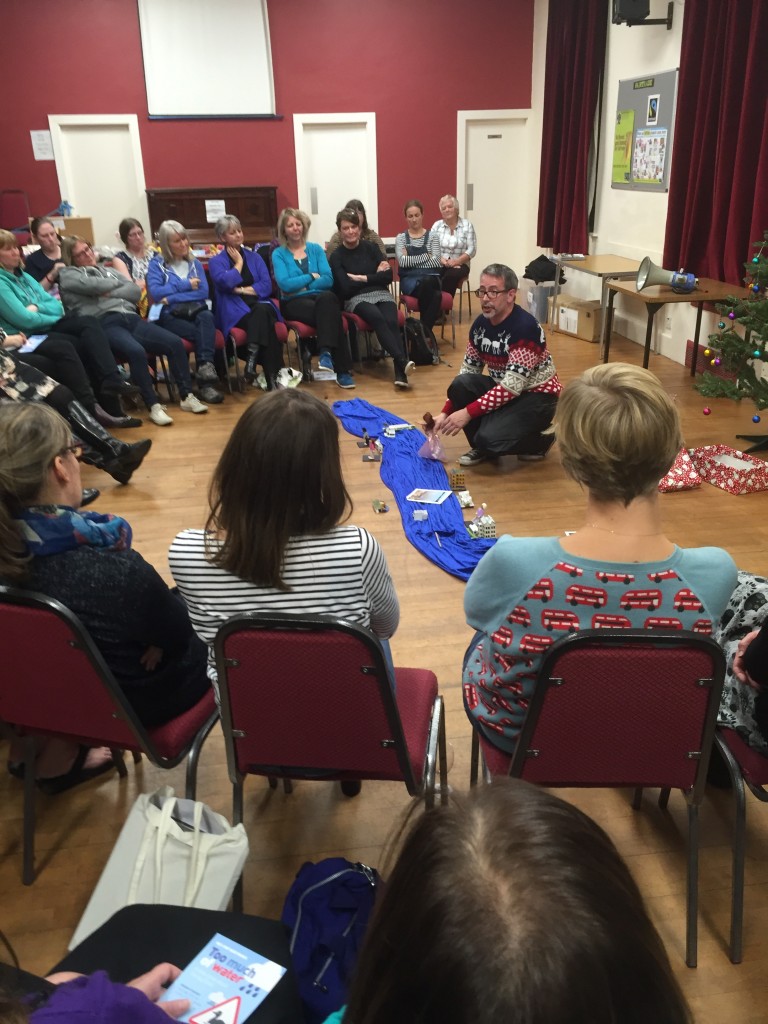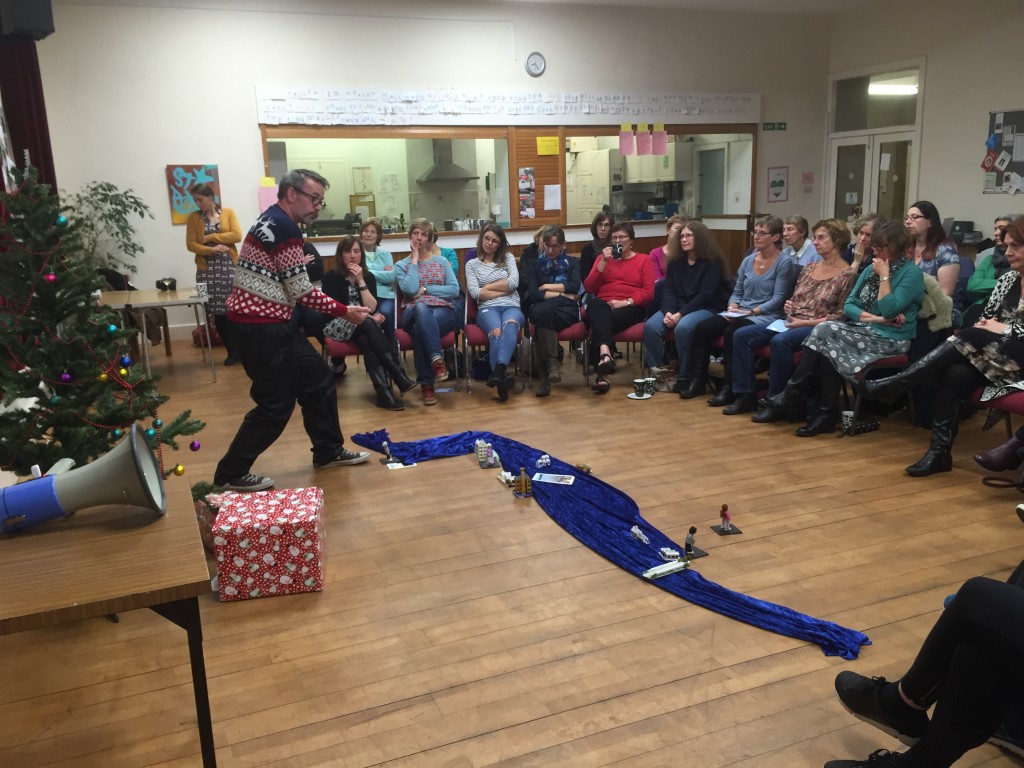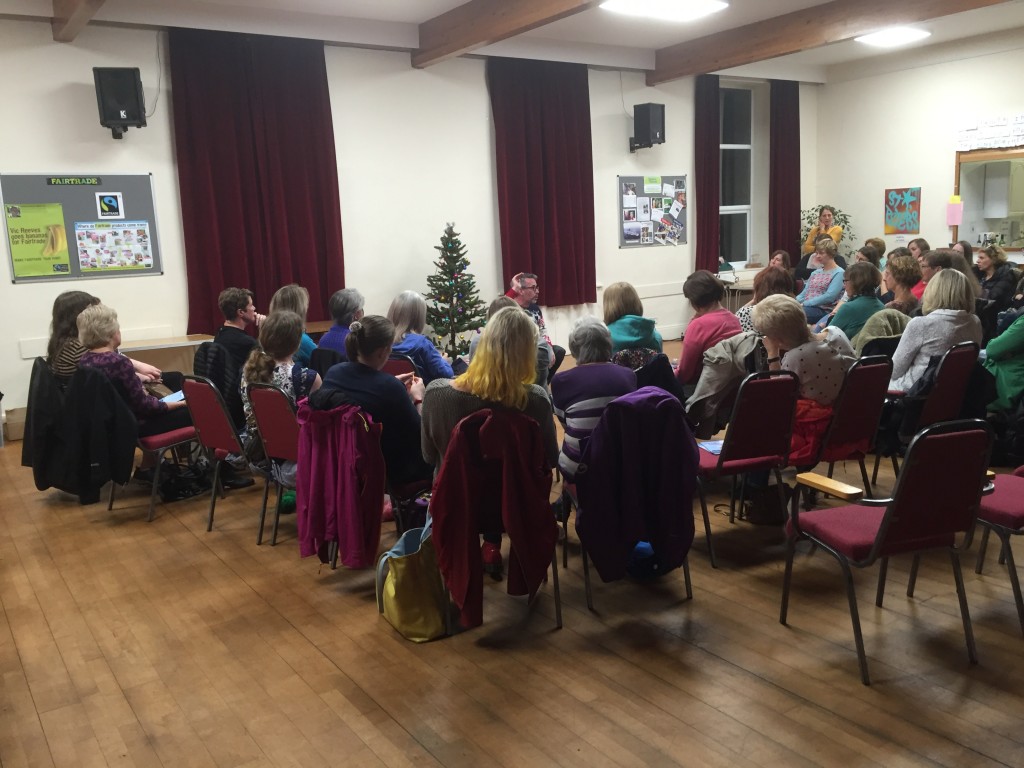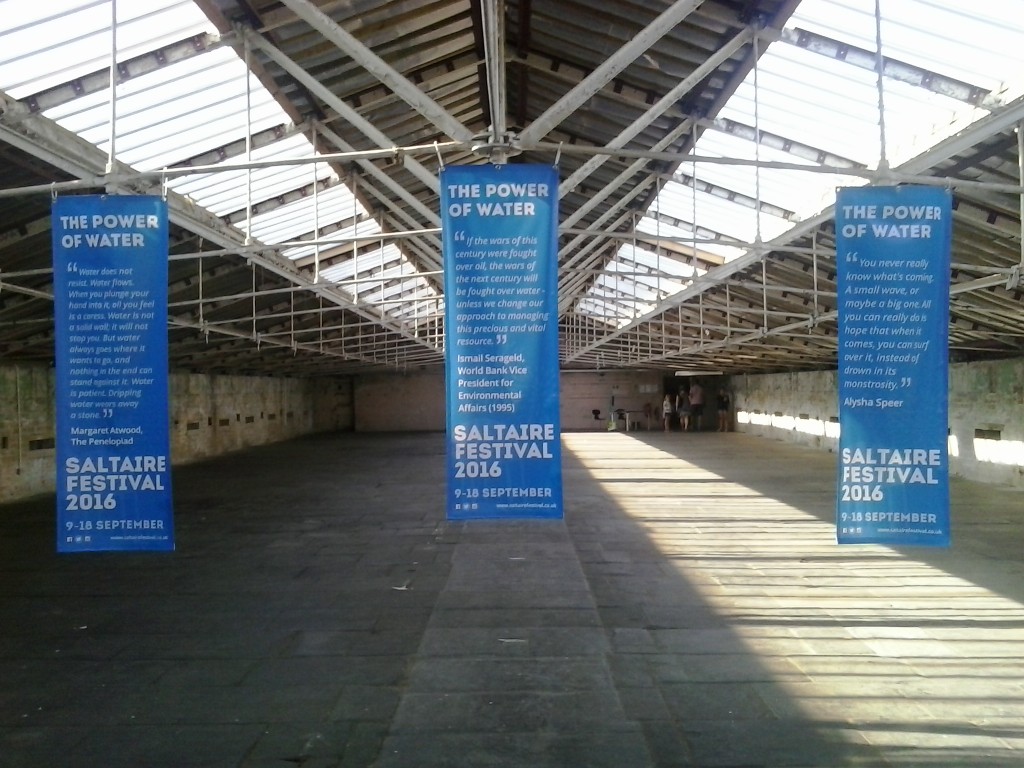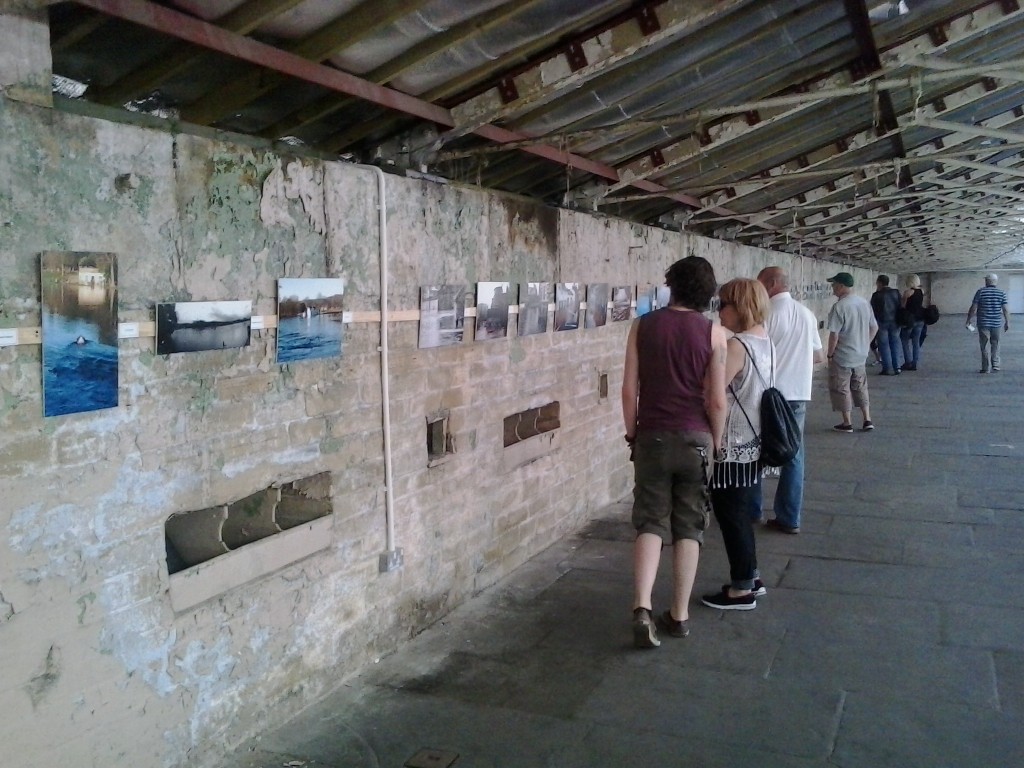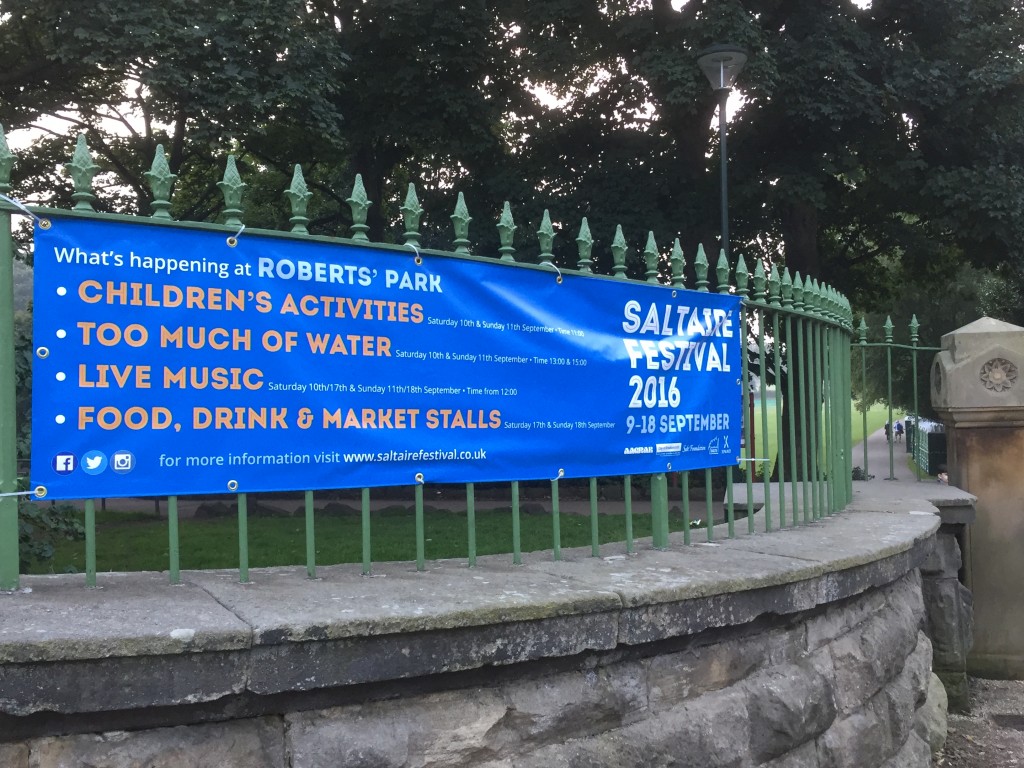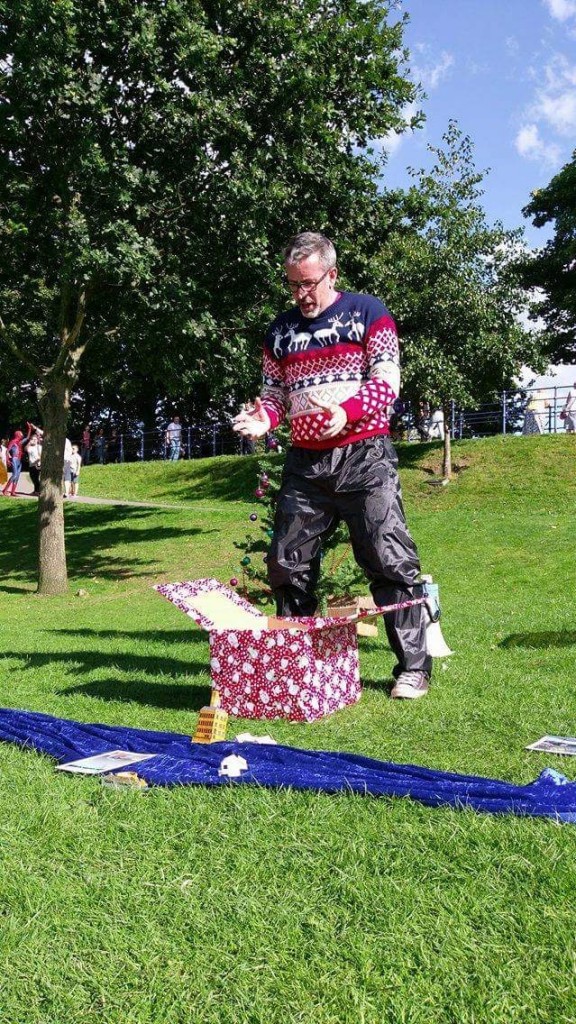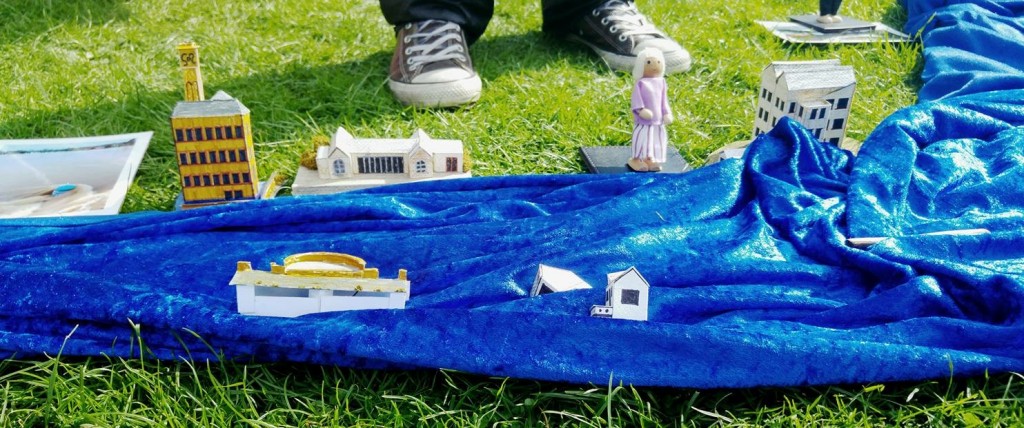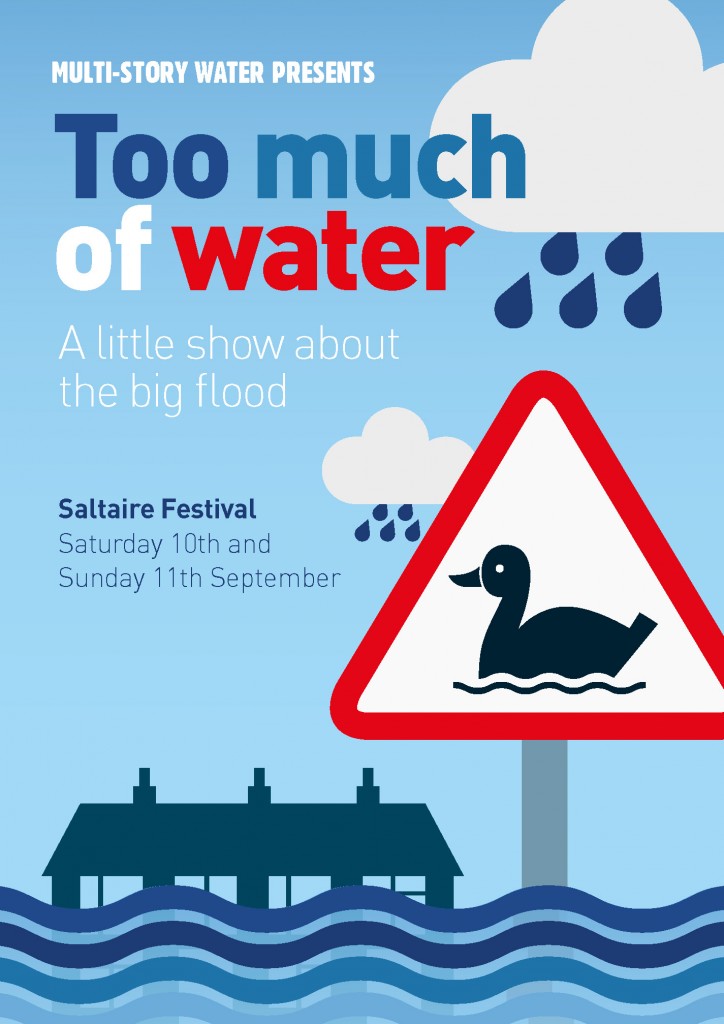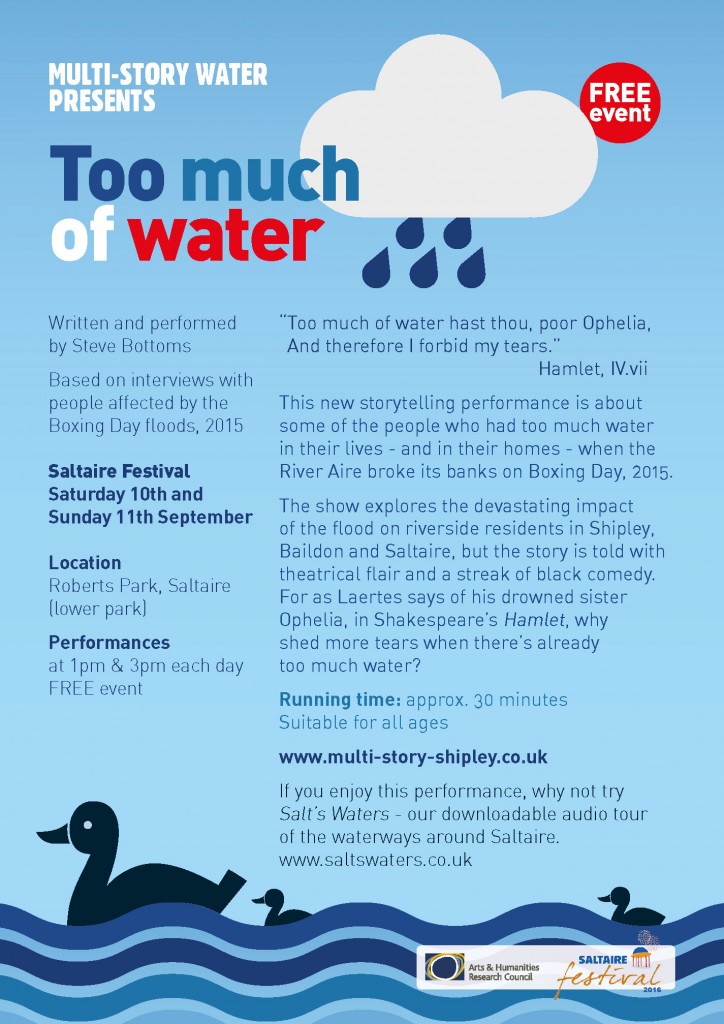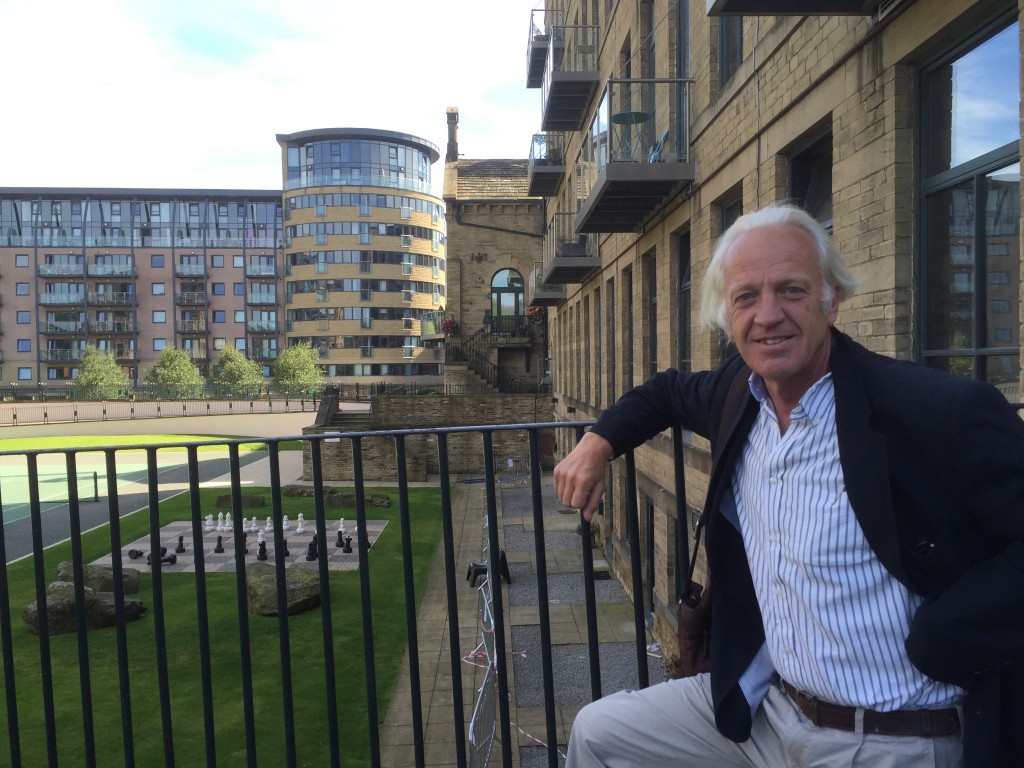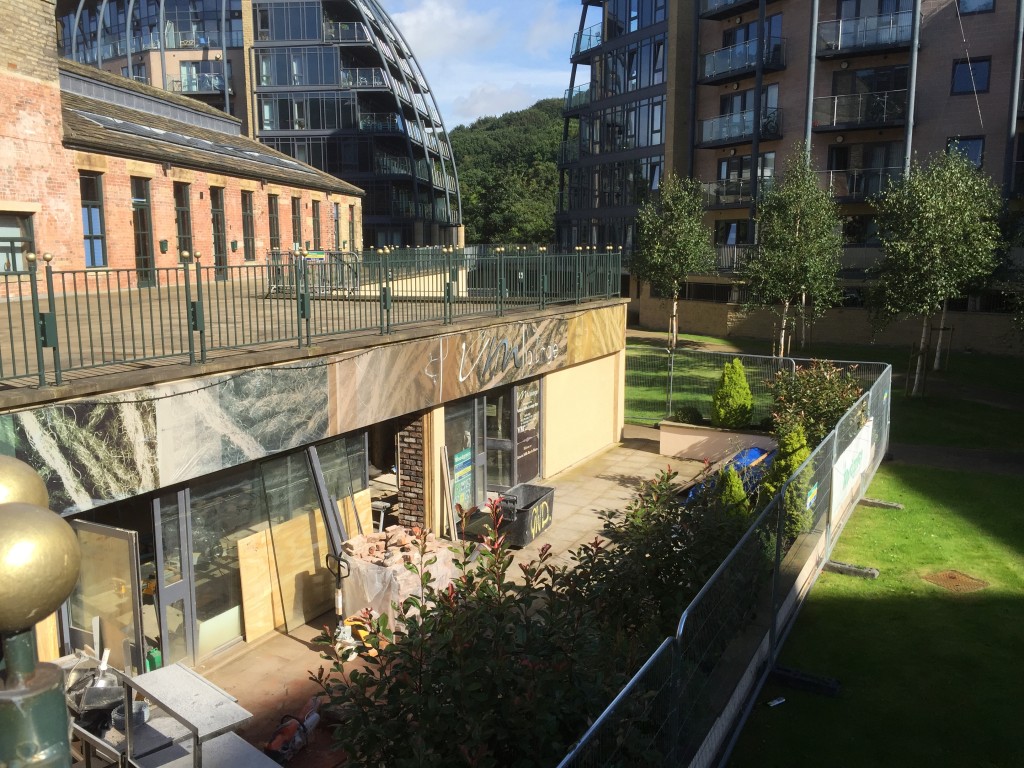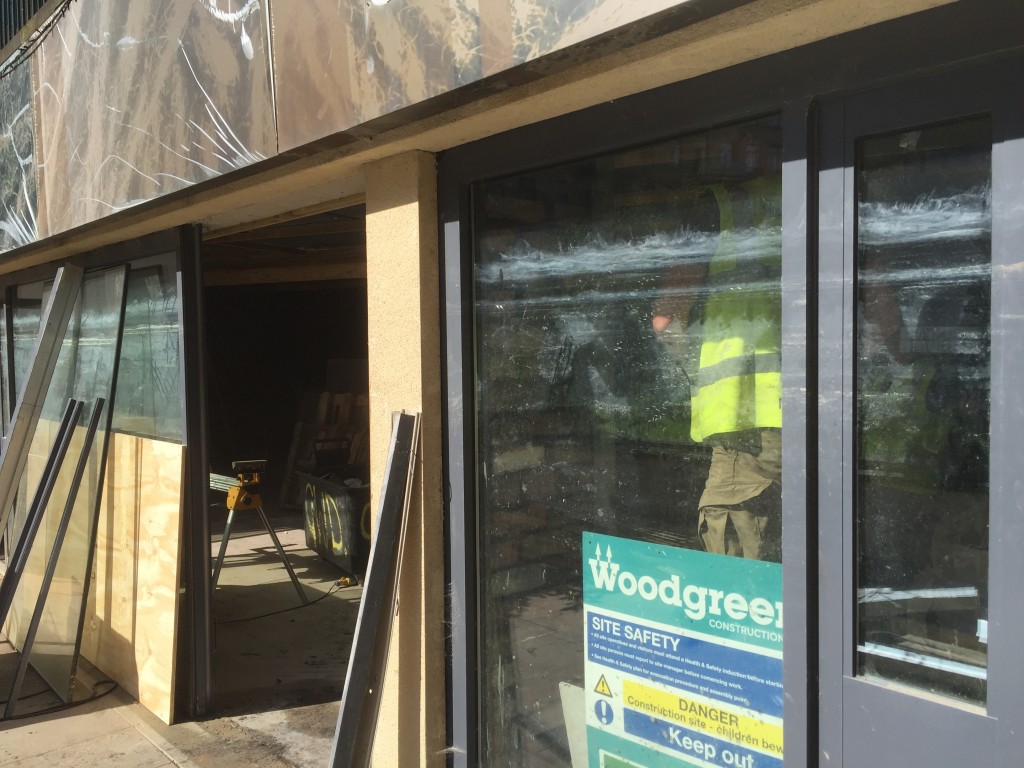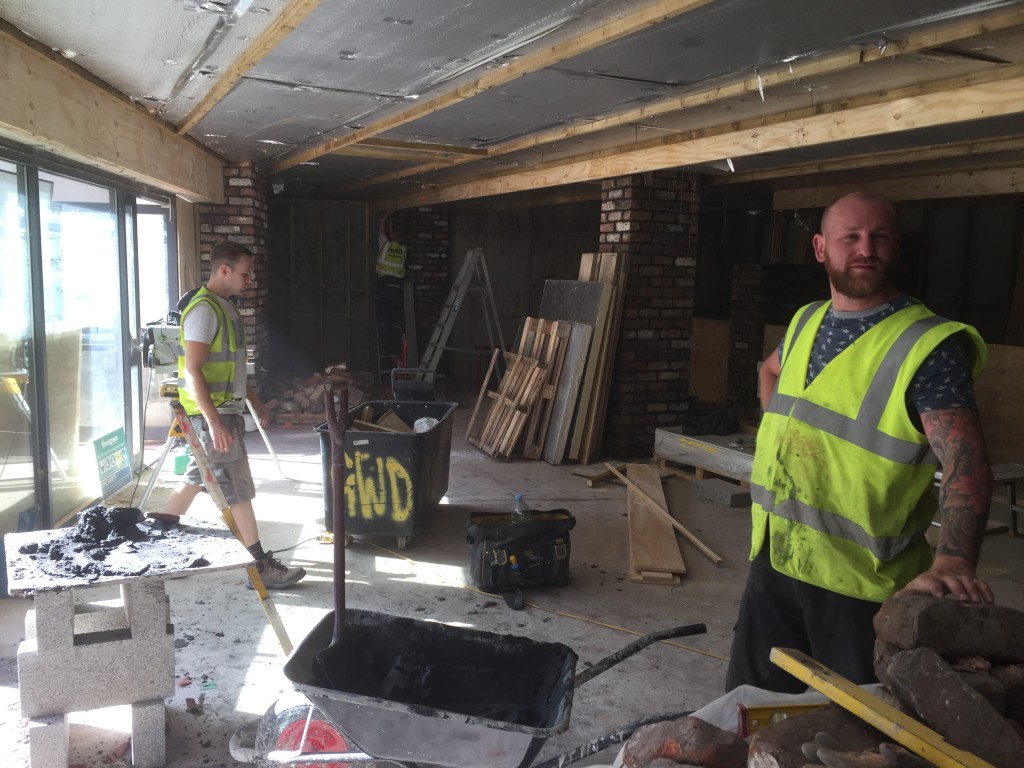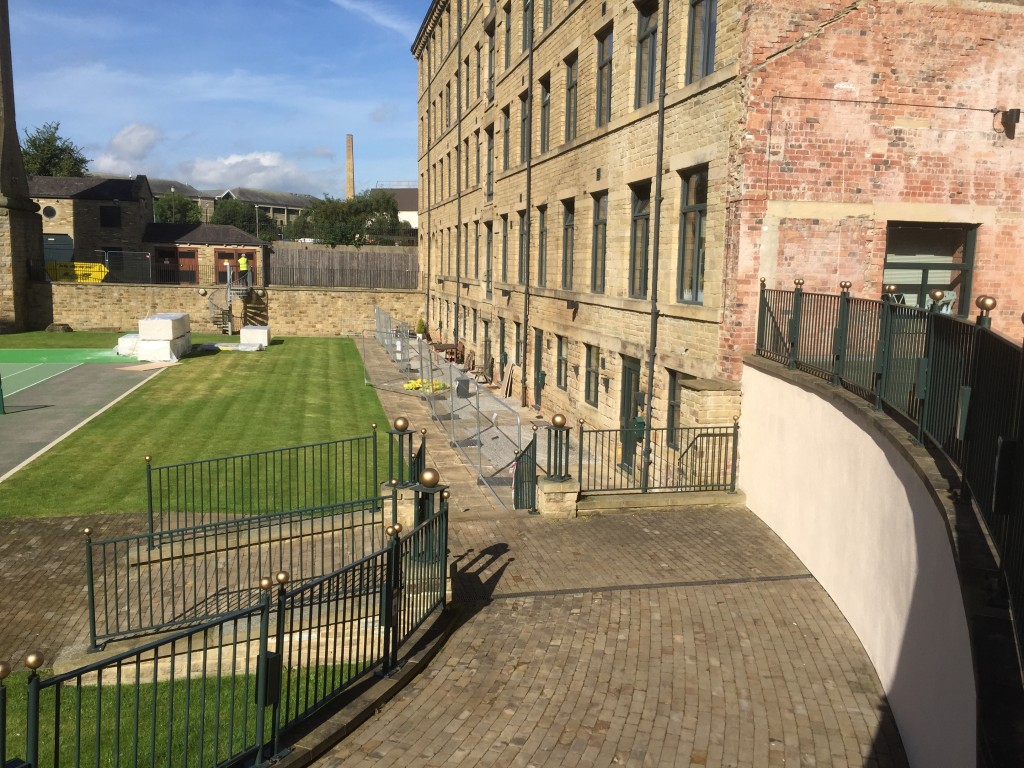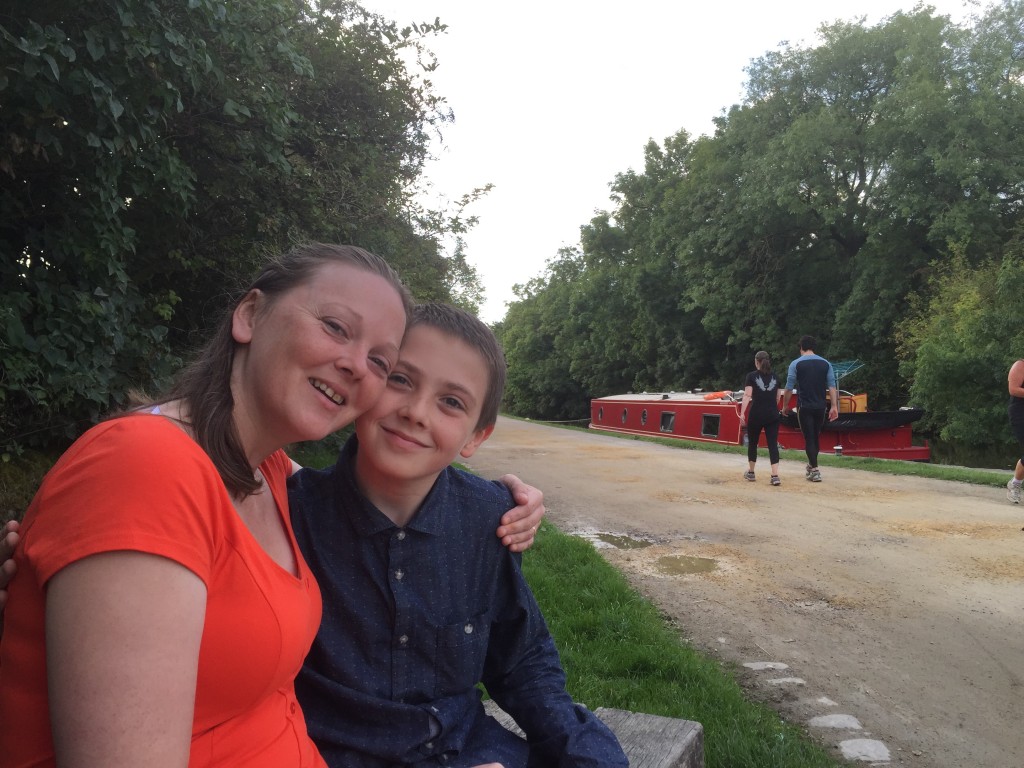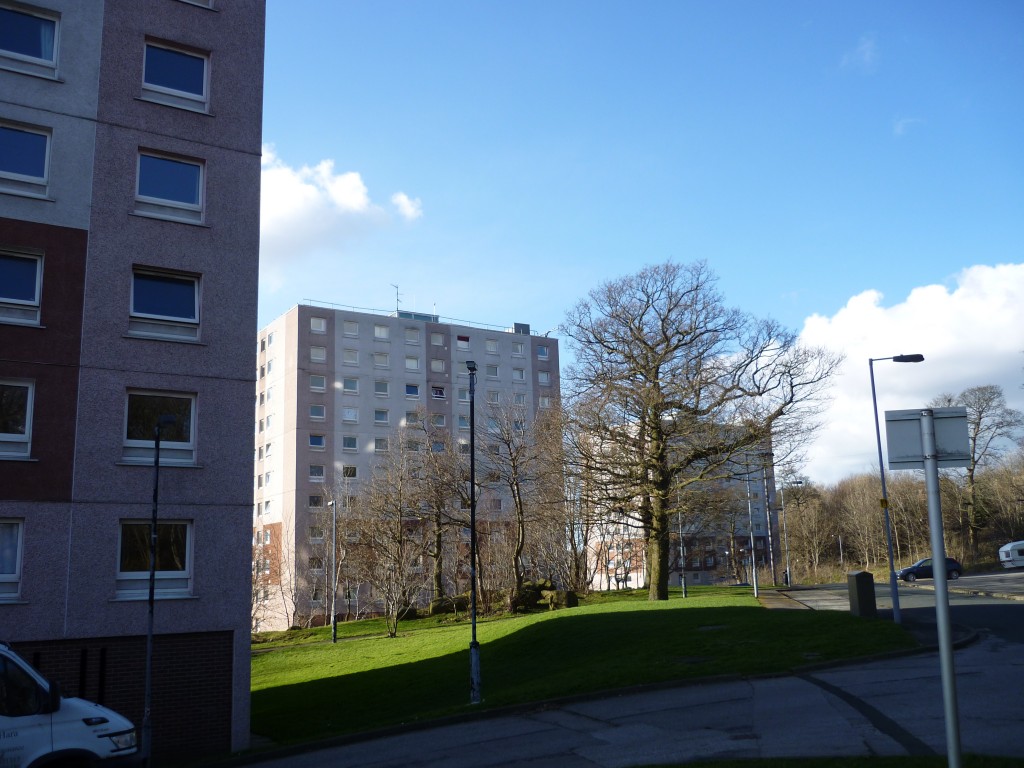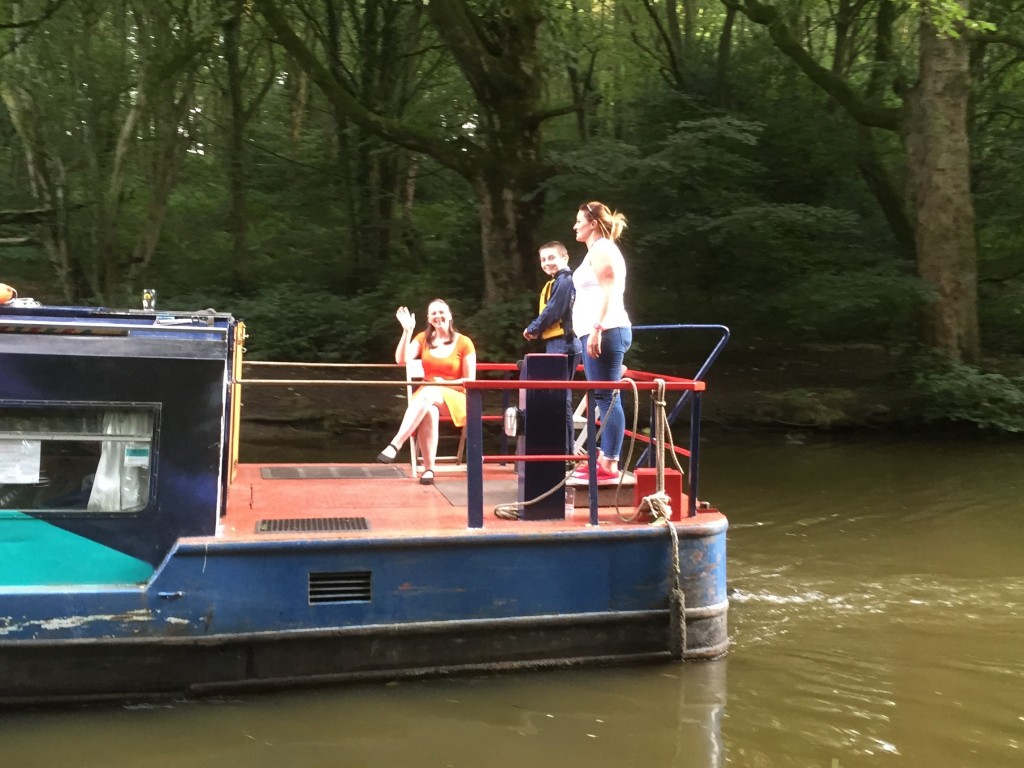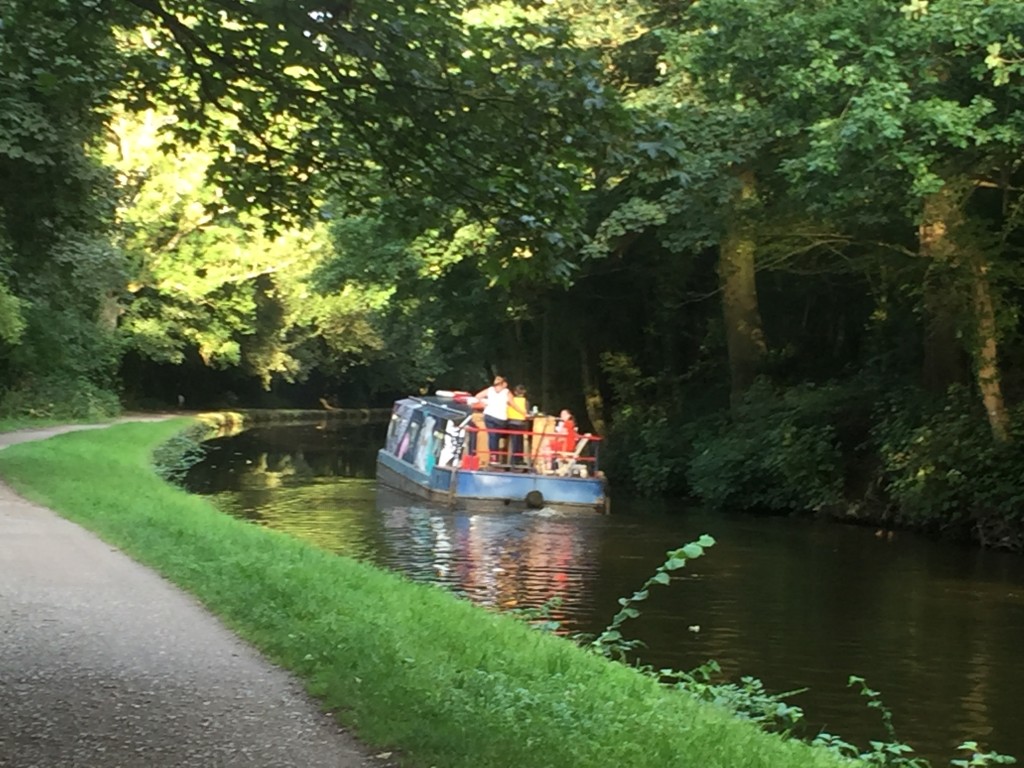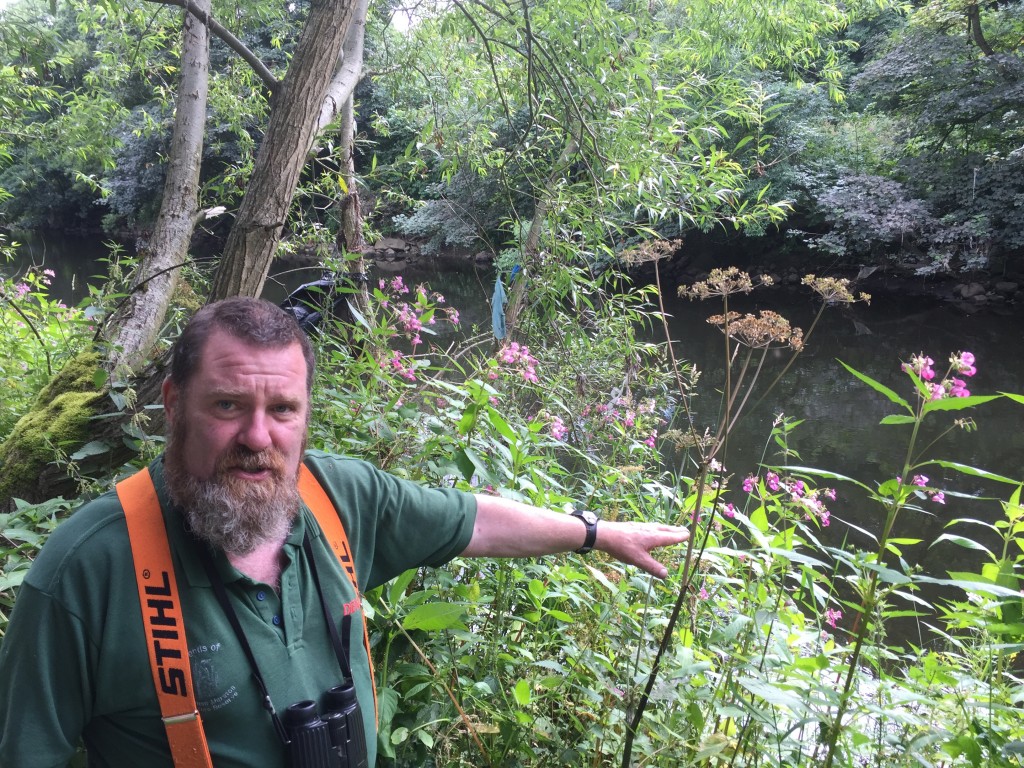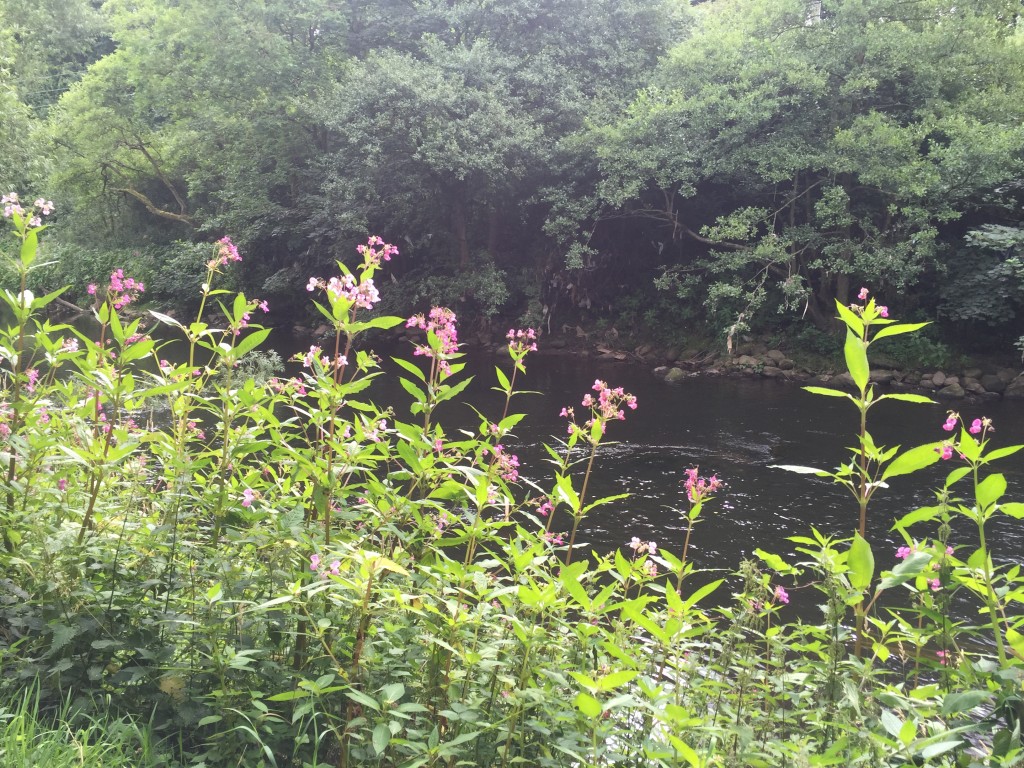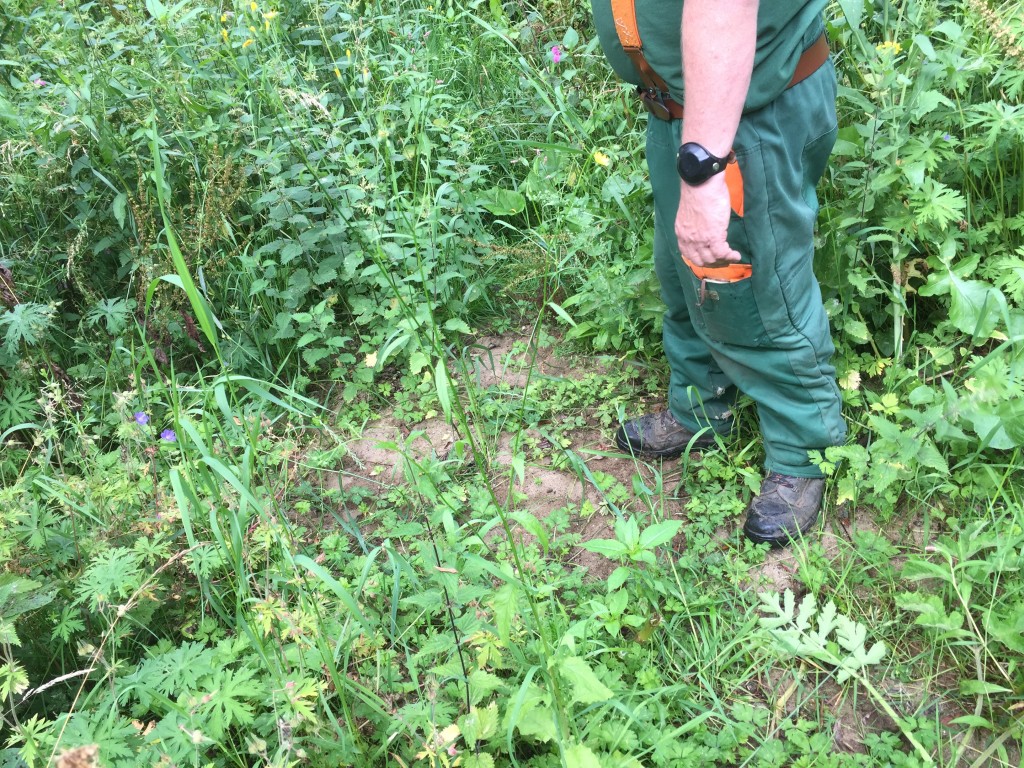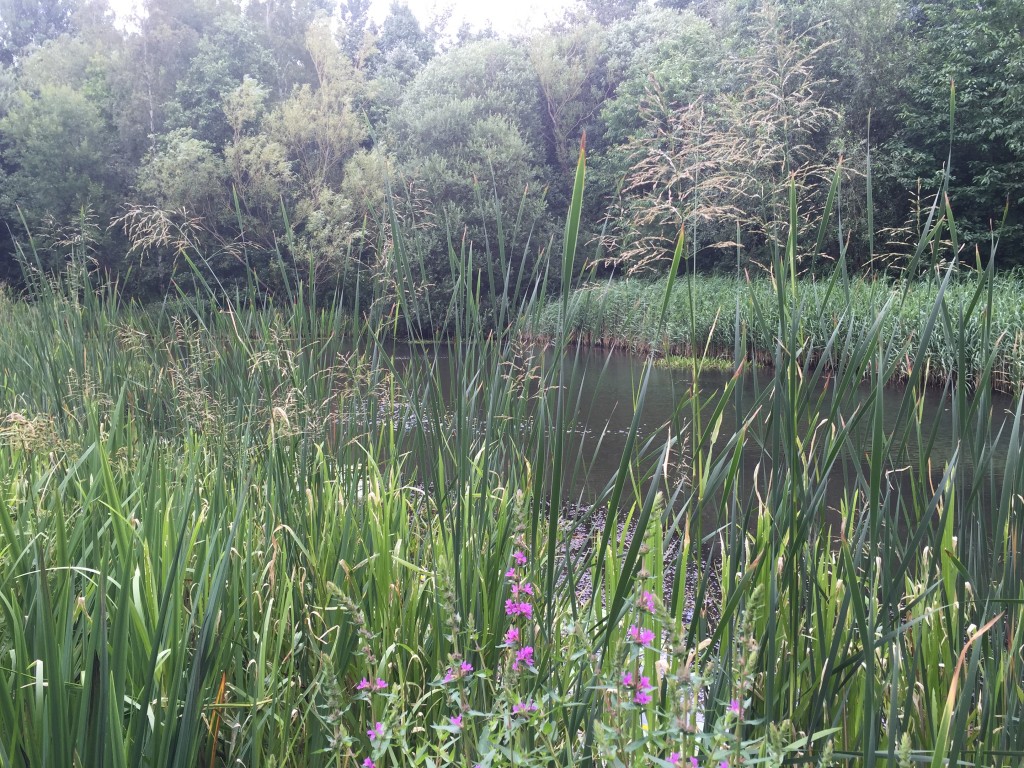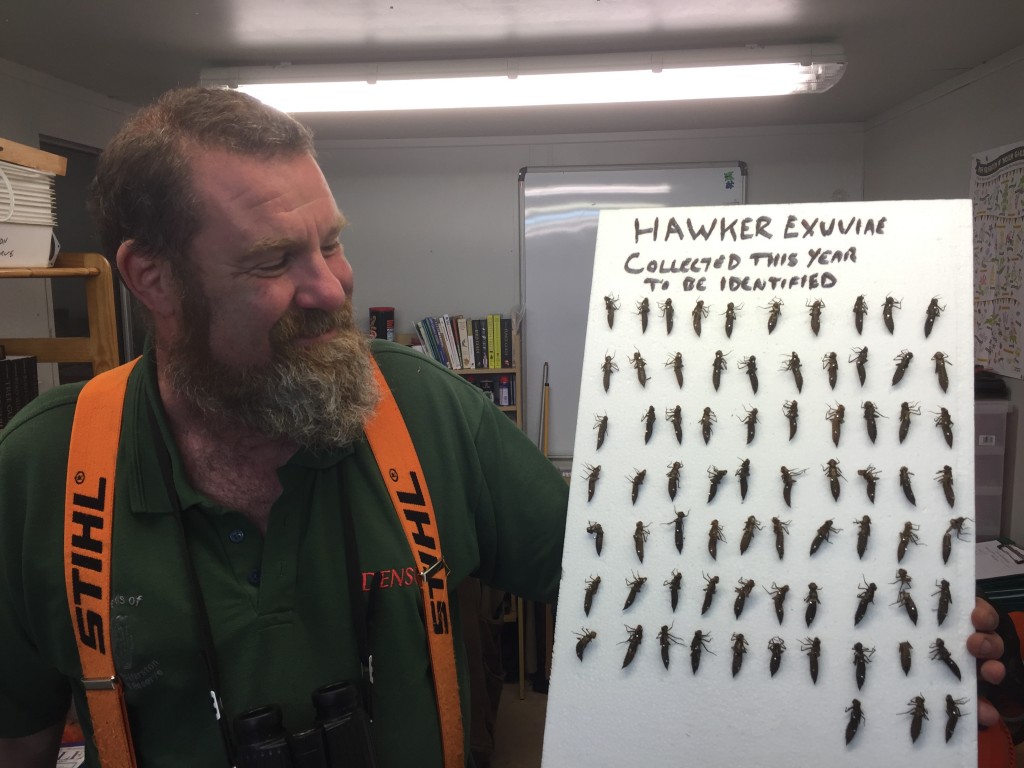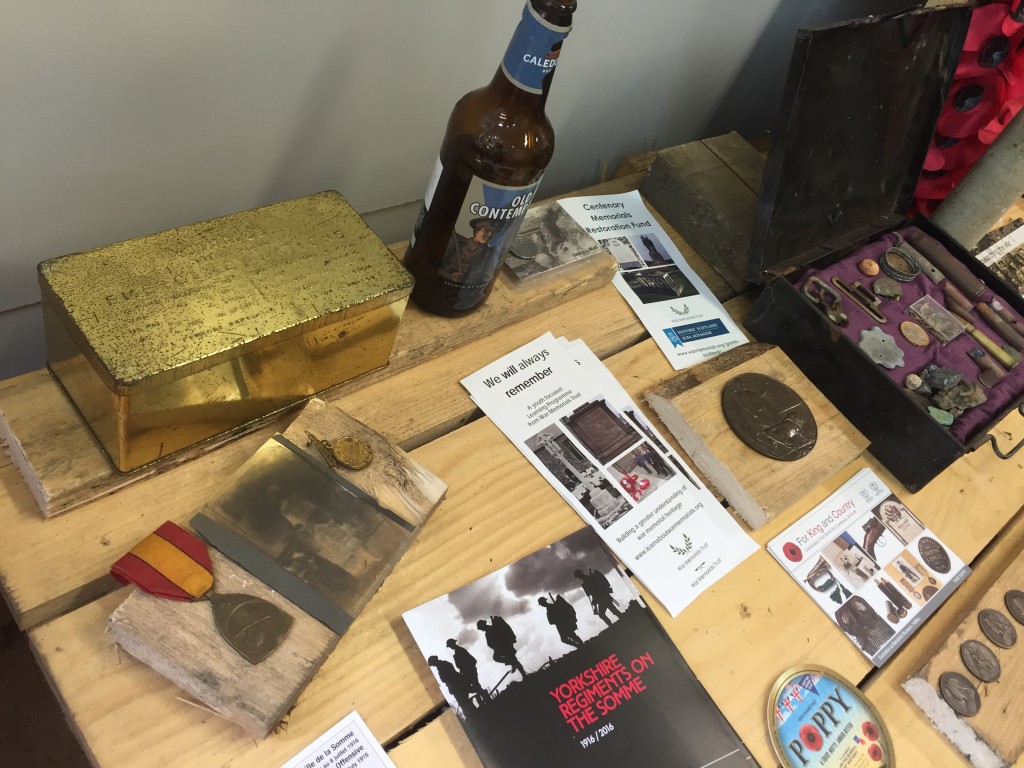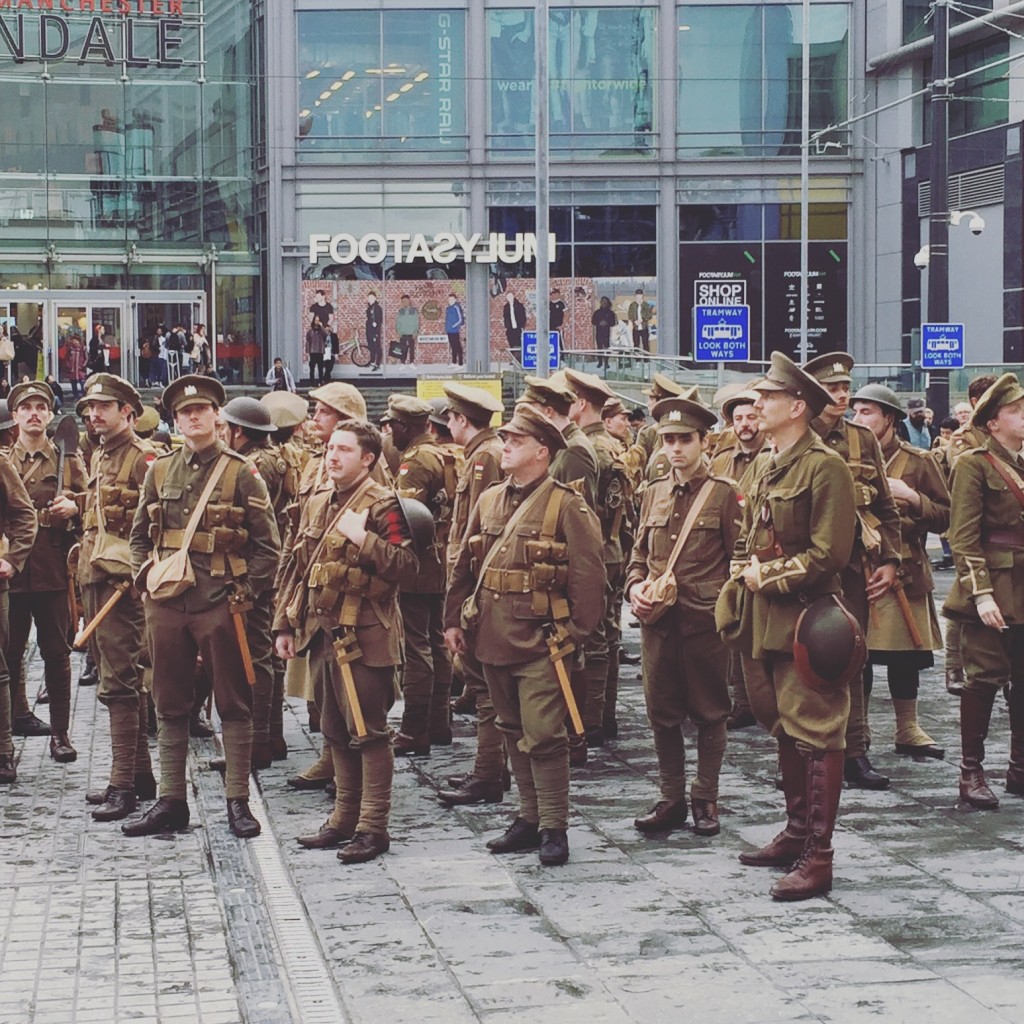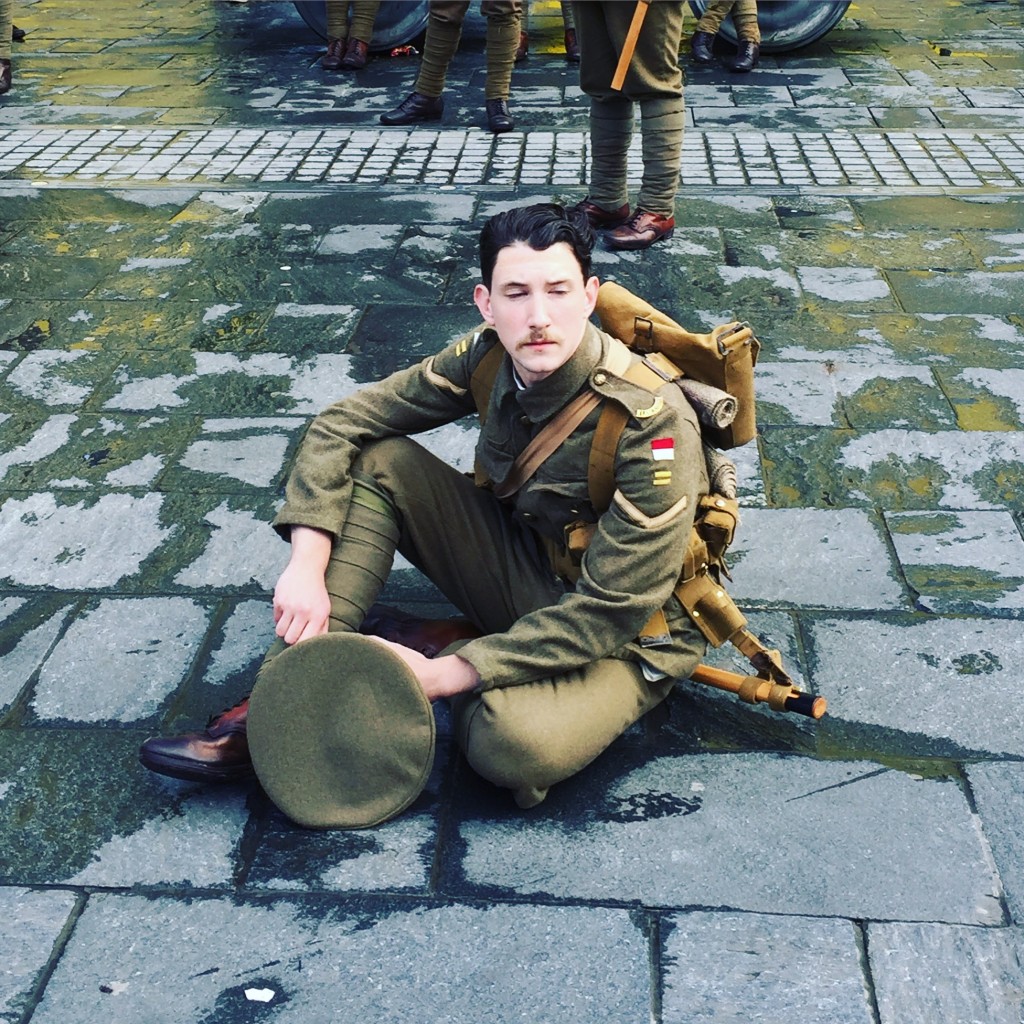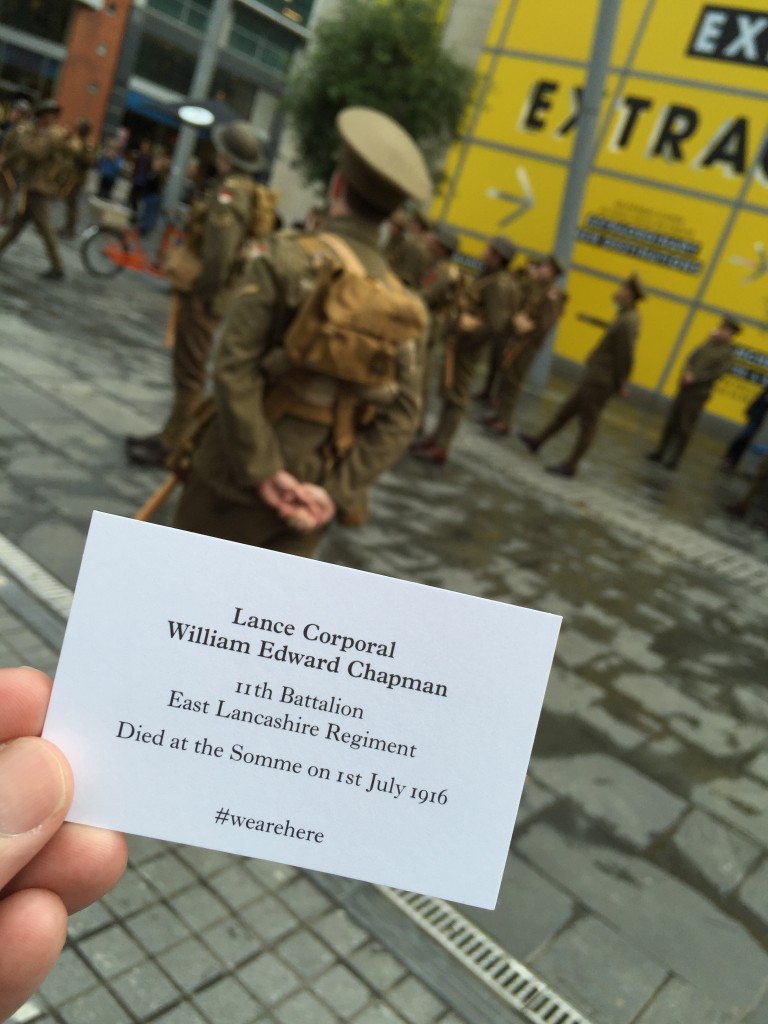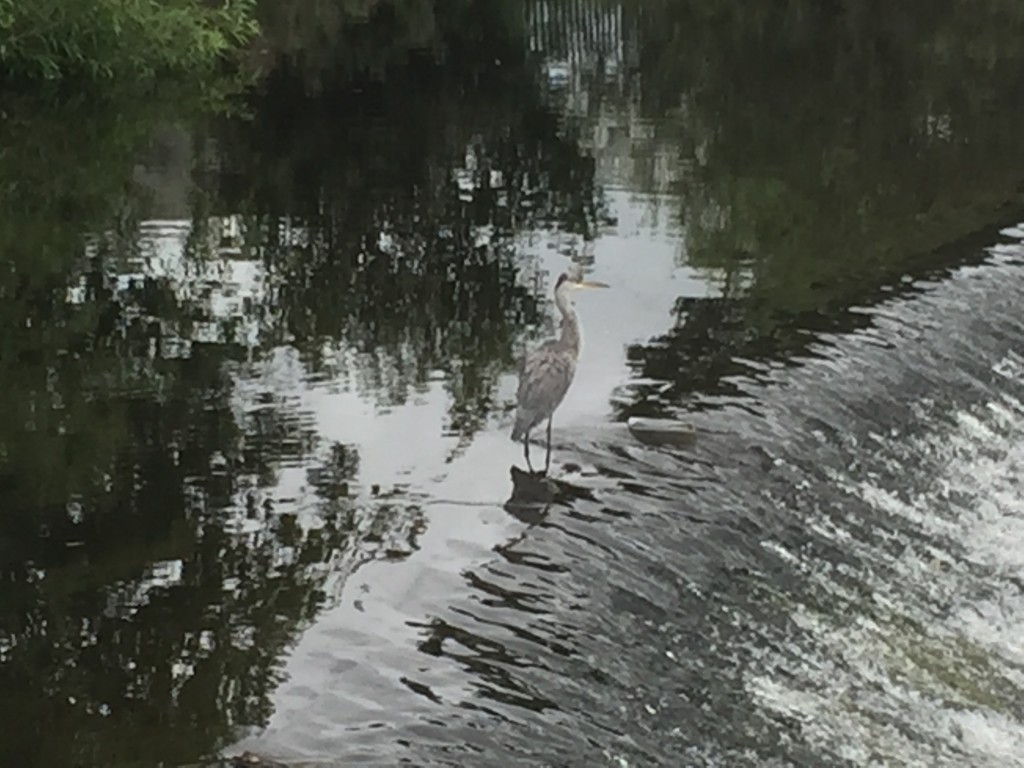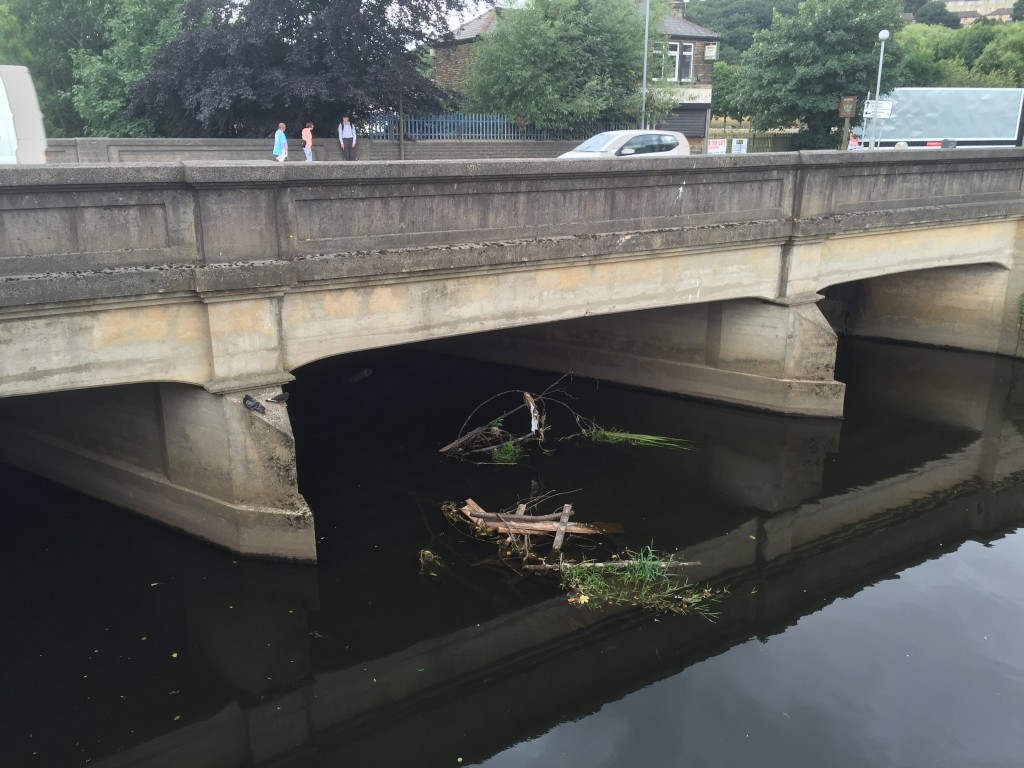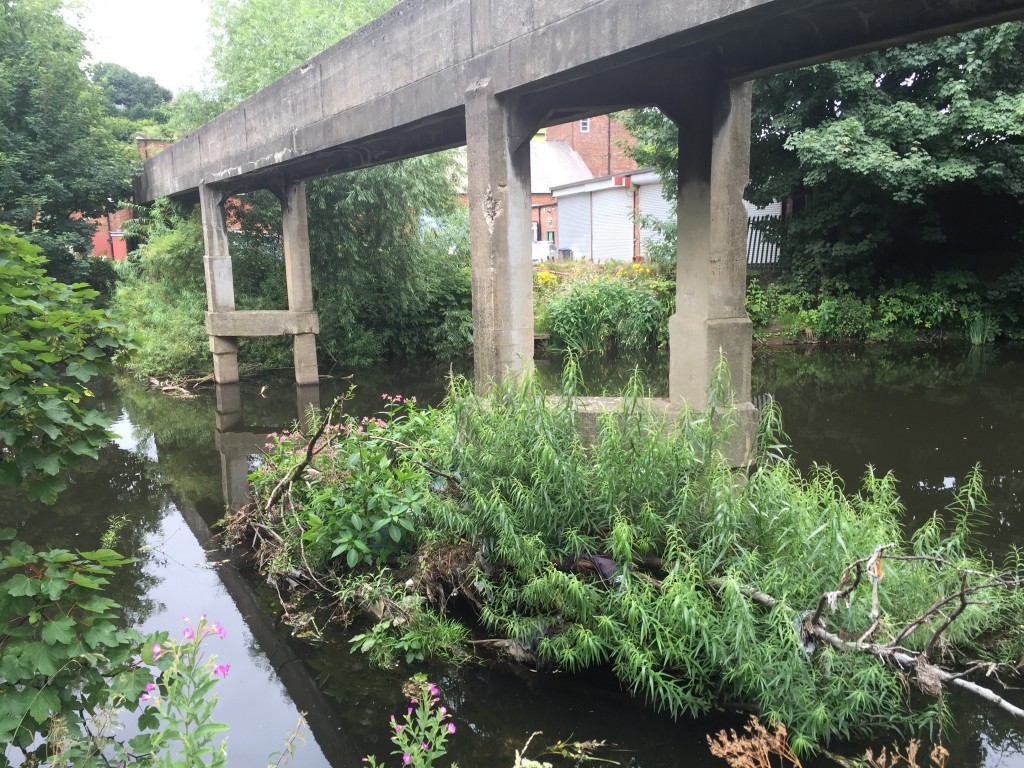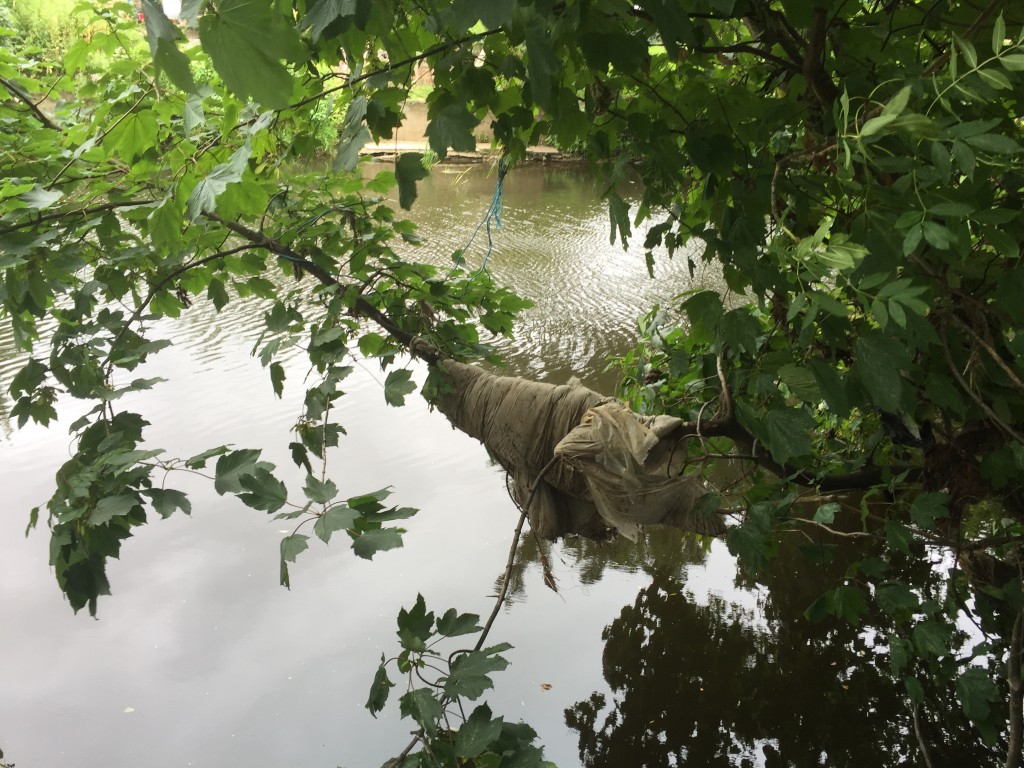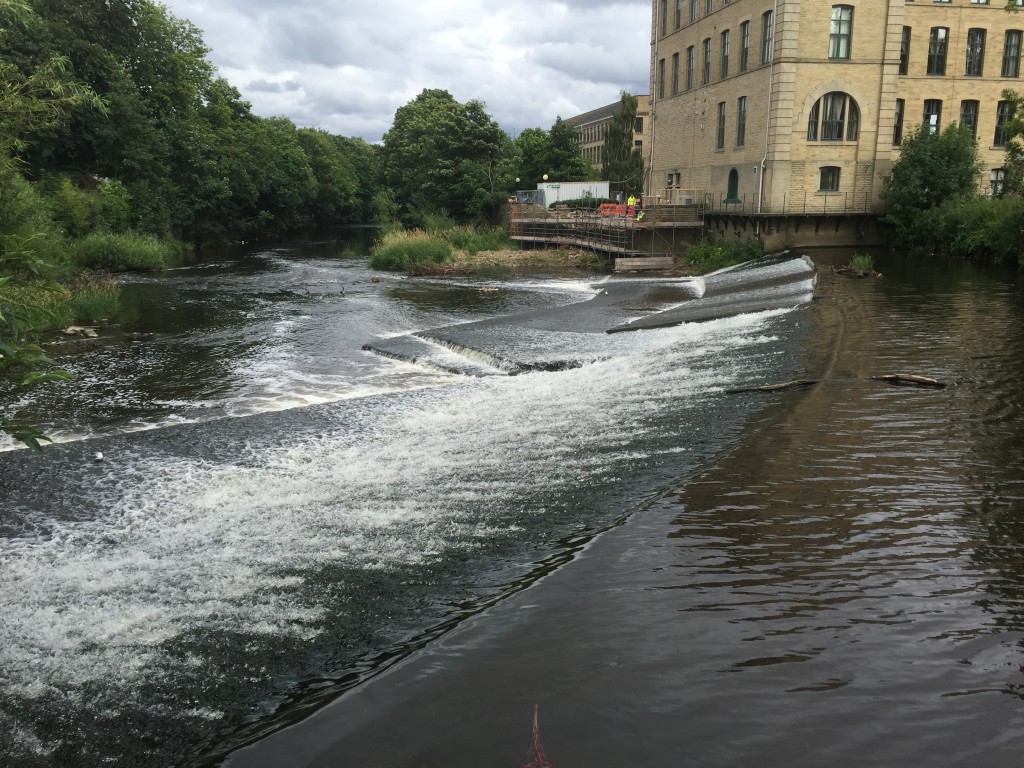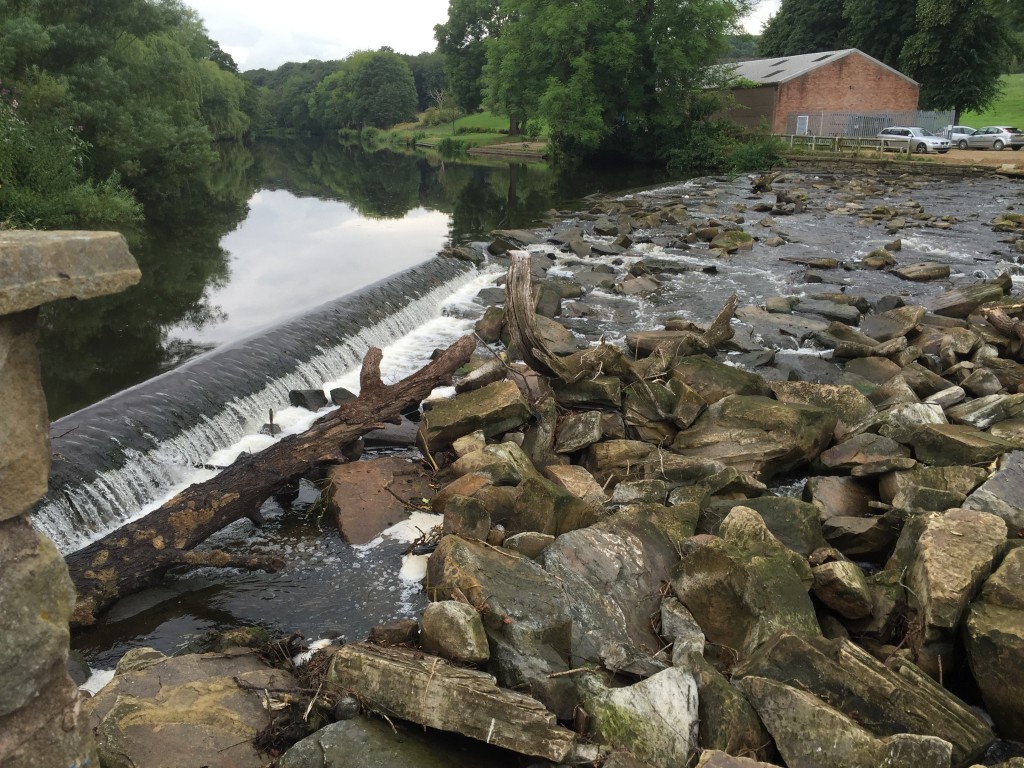Just before I get to Bradford… a wee nod to the fact that, this last Wednesday, September 28th, I was busy in Leeds with a fine group of actors, remounting the promenade performance After the Flood. An attempt to reflect on the impact of the Boxing Day floods in the city, from a number of different angles — including the ‘expert’ view on how to mitigate future flood risk — this piece was originally created for the Leeds Waterfront Festival in June (Multi-Story Water in collaboration with Simon Brewis’s Common Chorus Theatre). This week’s one-day-only revival enabled us to show the piece to some important people, and to get it documented for a film version we’re planning. For more info and images, look under the ‘Performances’ tab above…
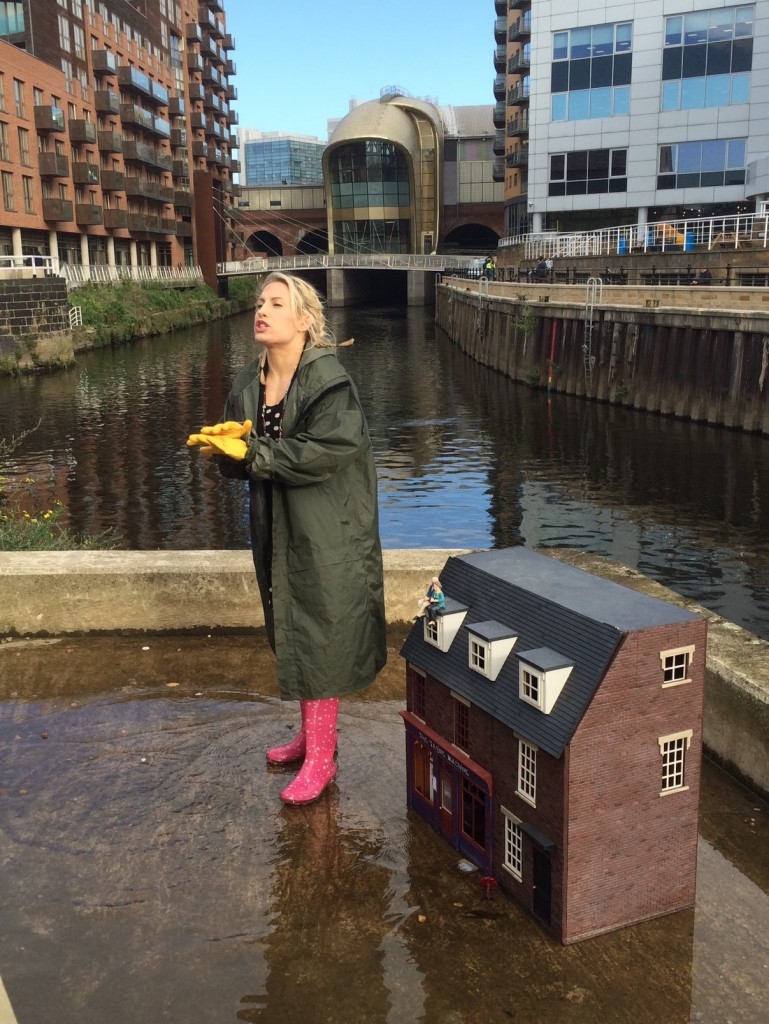
Kat Martin as “Poppy”, a Kirkstall flood victim
The following day, 29th September, Bradford Council published its “Flooding Scrutiny Review” — a “Report of the Corporate Overview and Scrutiny Committee” (henceforth, COSC) into how the council and its officers had responded to the Boxing Day floods in Shipley, Bingley, Keighley, and other affected areas of the Bradford district.
Or at least, I think it was the following day… The document is dated, on its cover page, “Wednesday 29th September 2016”, but since the 29th was actually a Thursday it’s difficult to know what exactly we’re talking about here. And the Bradford Telegraph and Argus was reporting on the Scrutiny Review a full week earlier, on September 22nd.
Unfortunately, this glaring, front-page error is far from being the only mistake in a poorly proof-read document that is littered with typos. The Committee’s apparent lack of scrutiny and due care with respect to the publication of its own report seems sadly symptomatic of their general approach to the overall task. That’s a pretty strong claim on my part, but let me break it down:
1. “In-depth review”.
The report tells us that, at a Council meeting on Tuesday 19th January (and yes, that actually was a Tuesday), the COSC should “undertake an in-depth Scrutiny Review into the effectiveness of Bradford Council and its partners in dealing with the floods…” Well, if this review is in-depth, I hate to think what “light touch” looks like. The entire report, once you remove front matter and appendices, is less than 10 pages long (in not-very-dense type, with lots of spaces). We quickly learn that the Committee’s “scrutiny” actually consisted of three “listening” exercises:
i. Looking at responses to an on-line survey, which was open to the public between April and July, and produced “75 responses”. This figure is also broken down into the areas that the responses were received from (15 from Bingley, 11 from Shipley, and so on), but the total of these figures only adds up to 62, so who knows where the other 13 went… (again, poor proofing…).
ii. Attending two information-gathering sessions, held on 21 and 26 July in Shipley Library and Saltaire’s Victoria Hall, respectively. (So, nothing in Bingley, Keighley, etc.) The latter was held at 2pm on a Thursday, automatically excluding anyone who has to work for a living.
iii. Attending one further information-gathering session, held on 25 August, this time with the Council’s relevant flood management officers and “external officers” (presumably people from the Environment Agency, etc).
What the Scrutiny report does is simply present a blow-by-blow account of what people said to COSC members in each of these three contexts. Nowhere in the report is there any actual analysis — or, dare we say, scrutiny? — of what was being said to them, by whom. The process seems simply to have been “you tell us something, we’ll write it down, and then we can say we’ve scrutinised the situation.” One is obliged to ask what, if anything, COSC was doing on this report between January and July, since everything in the document appears to have simply been collated in July and August.
The document ends with half a page of “Concluding Remarks” and one page of “Recommendations” — although these are mostly just broad aspirations. Since there has been little to no real, informed analysis of the situation, these brief recommendations can give little indication as to how the suggestions involved should actually be achieved.
2. The Council doing itself a disservice…
Quite the strangest thing about this report is that it seems simply to assume that the Council’s reaction to the floods was inadequate. One of the “key findings” is that “it was clear from the [online survey] responses that the only assistance that residents felt they had received was from Flood Support Groups…” Now, it is certainly a very good thing that the amazing work done by voluntary groups in Bingley, Shipley and elsewhere is given due recognition in this report, but the implication of this wording is that flood victims universally felt they had received no support from the Council. And I can confidently say that this is simply not true.
Many of the the people I have spoken to personally this year, as part of my research into the Shipley area flooding, have volunteered the opinion (without my even asking them) that the Council was actually very helpful to them — whether it was in terms of, for example…
– the provision of skips in which to dispose of flood-damaged goods
– the £500 council tax rebates that they received, often very quickly, directly into bank accounts, to help with short-term repairs and clean-up
– the later offer of £5,000 flood resilience grants to help with flood-proofing at-risk properties against future incidents
– the efforts made to clean out blocked gullies, etc., to ensure better surface drainage in flood-risk areas
I’ve had all this reported to me by affected residents. And in point of fact, all of these forms of support (and more) are acknowledged in the report’s section on information gathered from Council officers. But the Councillors on the committee appear to have made the assumption that the officers weren’t doing a good enough job, because they had been told people felt unsupported.
And yet… it doesn’t take a genius to see that if you hold an online survey of responses to the Council’s handling of the flood, the chances are that the people responding to such a survey will be — almost by definition — the people who have felt let down. And many of them no doubt had a right to feel let down. But that doesn’t mean that everybody felt let down. It’s simply that people without complaints don’t tend to fill in reports of this sort (or, indeed, to attend public meetings on a weekday…). Had the members of COSC actually made the effort to go out and speak to people where they live (as I have, and as have council officers and EA officers, in fact – because I’ve seen them doing it) they would have gathered a more balanced picture.
3. Communication, communication, communication…
The most persistent strain throughout the report is the belief that communication with the general public, from the Council and EA point of view, needs to be improved. “Marketing and communications are a key area for improvement”; “Bradford Council and its partners needed to be more pro-active [in communicating] key information”; “For communication to be effective…”; etc. Indeed, one of the final recommendations is that “Council staff involved in emergency planning receive training on communicating key flooding messages…”
This really is the pot calling kettle black, given that the report itself exhibits a very poor model of communication — both in the efforts that COSC actually made to communicate with the public during the review (an on-line survey and two public meetings is surely the bare minimum required), and in the slapdash way it then communicates its alleged findings. Indeed, one of those findings is so badly written that it is literally incomprehensible:
“Members were also concerned about the confusion surrounding the use of flood resilience grants, as well as half of the properties affected by the floods had actually received flood resilience grants and that that had of the properties that had been flooded had actually applied for flood resilience grants.” (p.11)
We are given no information as to what “the confusion” around these grants might have consisted of, but we are certainly left confused by the sentence.
Embarrassingly, the poor writing even extends to the Committee’s recommendation to an external partner, the Environment Agency:
“Recommendation 6: This Committee recommends that the Environment Agency ensures that all residents and businesses that have been affected by the flood are on the flood alert system and that flood alert messages should be circulated much early.” [sic] (p.13)
Leaving aside that typo, this statement exposes just how little the Committee has actually comprehended about the tricky realities of flood risk communications. Reacting to complaints from members of the public who wished that they had received automated flood alert calls sooner, COSC simply passes this on as a recommendation. But I have spoken to residents who knowingly chose not to react to the phone calls they did receive — partly because of the “cry wolf” problem that occurs when you have received a call, in the past, that proved to be a false alarm. The fact is that, even with the best scientific tools available, rainfall remains an inherently unpredictable phenomenon (you never know exactly where or when a cloud will decide to burst…), and so flood risk predictions necessarily have an element of educated guesswork about them. If calls were to go out earlier, there would be less accurate data involved, and thus more guessing… Calls would thus run the risk of being more inaccurate, and this would further increase the likelihood that people will ignore them when there is a real problem coming. This is fairly simple stuff to understand (I am not a scientist, by any stretch), but the Committee doesn’t even seem to have considered it.
Incidentally, that other point about residents being put on the flood alert system is again indicative of COSC’s ignorance of the facts it purports to be investigating. Several times the report refers to people needing to be registered onto the call system, but no mention is made of the fact that such automatic opt-in (i.e. you have to choose to opt out, not opt in, if you live in a flood zone) has been government policy since the Pitt Report of 2008. Where people did not receive these calls — on Branksome Drive, for example, in Shipley — it is because of an Environment Agency oversight in application of the system (for which they have already apologised). So this recommendation is, in short, a bit like telling your grandmother to suck eggs.
4. Who needs experts?
For me, these last points about how poorly informed some of the report’s findings and recommendations are, seems indicative of a general lack of interest or trust in what the “experts” on the issue of flooding might have to say. The experts are, in this instance, the flood officers for Council and EA — i.e. the people who spend their professional lives dealing with the complexity of these issues of when and how to alert those at risk. Yet their comments are treated in this report as being of considerably less significance than the comments of the general public in the first two (all too sketchy) “listening” exercises.
I am not, of course, saying that the public’s concerns should not be treated seriously — they absolutely should. But the public is not the place to look for technical solutions. Right at the top of its “key findings” chapter, the Committee reports having been “made aware of various issues and concerns. Some of these focused specifically on flood prevention by looking into river dredging…” (p.6). It’s not surprising that dredging should be the first thing mentioned here, because it’s the go-to solution for anyone who has read a tabloid newspaper. In fact, the obviousness of this solution has become an article of faith for some, as is evidenced in the comments feed underneath the T&A article on the report: “Yes dredge the rivers to lower the water level, its so simple, why can’t the Councillors see that?” Yet anybody who has spent any time looking at the dredging question (and I am certainly no “expert” on this) knows that it is very far from being “so simple”: it’s expensive, rarely cost-effective, it can increase flood risk downstream of the dredged area; it is damaging to the ecosystem, etc. etc. But why listen to all that complicated stuff when the “solution” is so much simpler? As Michael Gove announced before the Brexit referendum, “people in this country have had enough of experts“.
Unfortunately, this line seems to sum up the approach of Bradford Council’s scrutiny report on the Boxing Day floods. Why get into any detail with our scrutinising? That would require us to actually learn something! We’ll just listen to what people say to us, in a small, arbitrarily selected set of listening contexts, and then write down a summary of what they said. Then we’ll write down some things we think might be a good idea, based on not having thought about any of this for very long. And we’ll call these recommendations. These recommendations might well suggest things to be done that have, in fact, been being done for years anyway (e.g. leafleting homes about flood risk). But who cares, as long as we can claim to have scrutinised something and given our own council officers a gentle kicking in the process, to keep them in their place. I mean, nobody’s going to read this report anyway, so we don’t even need to proof read it, right?
The depressing thing about all this is that it seems, basically, to represent politics as usual. And judging from the T&A article on the report, that’s also what we’ve had in the response to it. The Committee is Labour-dominated, so the leader of the council’s Conservative group says that the report doesn’t go far enough – “he said the council needed to prioritise flood prevention work far more.” And of course he would say that, because it’s his job to oppose Labour. Never mind that it was a Conservative government that cancelled flood prevention schemes up and down the country as part of its austerity drive… when there’s a political football to kick, just kick it.
When you have politics as usual, you have politicians sounding off at each other. What you don’t have, it would seem, is them actually thinking carefully about what a river is, what a flood is, or what the best-informed responses to an incident like this might be.
So much for scrutiny.
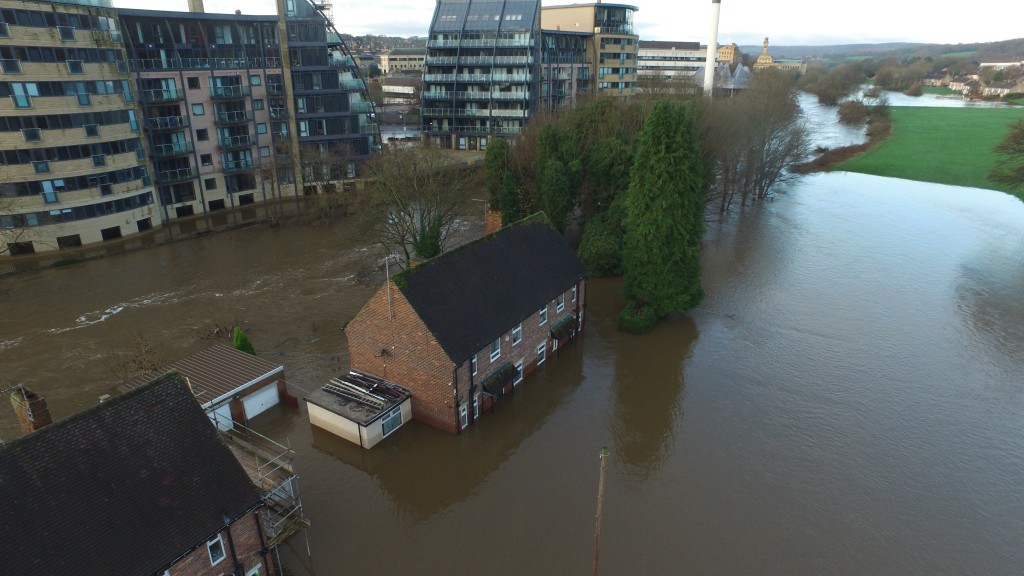 I’m very grateful to Brian Tuxford, of Northway Vehicle Sales (on Baildon Bridge) for sharing these images with me and allowing me to put them up on the blog. I featured Brian a few weeks ago, in this blog post, but it’s taken me a while to get these images up (because the CD he gave me had got corrupted somehow, and I had to get technical support to recover the photo files). Anyway, it seems appropriate to share them at Christmas — one year on.
I’m very grateful to Brian Tuxford, of Northway Vehicle Sales (on Baildon Bridge) for sharing these images with me and allowing me to put them up on the blog. I featured Brian a few weeks ago, in this blog post, but it’s taken me a while to get these images up (because the CD he gave me had got corrupted somehow, and I had to get technical support to recover the photo files). Anyway, it seems appropriate to share them at Christmas — one year on.
